#resulting in the cancelled tv show and comics quite early on
Explore tagged Tumblr posts
Note
If Seven have water bending powers, Six soul eating powers and Mono space-time powers what would Raincoat Girl powers would be

oOOOO see, I thought about this quite a bit for the past week. I don't think Raincoat girl's powers will come up in Channel Change, so I'll share my headcanon here.
Raincoat girl I've always called "Five" though I've considered calling her "Quinn" (or even "Cinc") sometimes to not be so obviously a number, kind of like Mono's naming scheme. But I don't think the name Quinn would stick with the fandom as well as "Five" would...
To me, Five would have the ability to change her size at will. (Typically shrink, but only when she gets more powerful later she will learn how to enlarge herself.) She may also have the ability the manipulate the sizes of objects, people, or animals around her.
My evidence: 1. "VERY LITTLE Nightmares" game title 2. The Nest is more like a giant doll house, and she's surrounded by children turned into dolls 3. Each collectible has something to do with the children's powers. She collects Jack-in-the-boxes; children's toys that had been made in France as little "Demon-in-the-boxes". A tiny puppet pops out to surprise/scare the person playing its music because typically, no one would expect a creature to be compressed in something so small.
Six is a soul eater. She can suck the souls out of adults for sustenance. She can suck the youth out of children, turning them into nomes so that she may remain immortal. She may have the ability to teleport through shadows. She may or may not also have the ability to create shadow proxy children?
Mono is a space-time manipulator. He can travel through time and teleport elsewhere through TVs. He can leave behind imprints of children and also reabsorb them? He has minor to major telekinesis and draws in the attention of those around him.
Seven has hydrokinesis. He can physically manipulate water. He can create air pockets to breathe underwater. If he concentrates, he can also control the water inside someone's body including his own. This proves difficult when trying to lift others, but his body is the easiest to control, giving the illusion that he's floating on air.
Five/Quinn is a size shifter. She can shrink at will to crawl through small spaces like a mouse; to get into hidden rooms or to avoid being caught. She can also enlarge herself at will and has the ability the manipulate thse sizes of objects, people, or animals around her. But this requires heavy concentration to do so.
#very little nightmares have some inconsistencies with its plot layout and canon#but u cant blame them because it was made by a different company#and Tarsier got too big for its britches when it started out#resulting in the cancelled tv show and comics quite early on#so theres a lot of confusion on the canon and what is actually going on in the series#especially with the intro of LN2 and the issue surrounding TVs#the inconsistency i noticed was that Five's nightmare is about locking out Six and Six is banging on the door to be let in#but Five doesn't fear Six#Six is not the one to cause Five's death its the pretender#I mean i guess you could look at it like Five locked herself in a room- aka a box? like the jack in the boxes?#thus???? a hint to her power? but its a stretch#thats why its not a fourth reason in my evidence list#anyway- I still think a size shifter is very fitting for Five- I really wish we knew more about her#Little nightmares#little nightmares 2#very little nightmares#LN six#LN mono#LN seven#LN five#the runaway kid#the raincoat girl#text post
245 notes
·
View notes
Text
Vintage Shows to Watch While You Wait for the Next Episode of WandaVision - The 60s
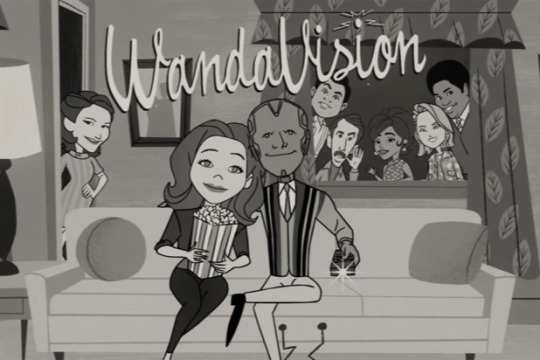
So the 60s is the era that Wandavision pulls most heavily from for it’s inspiration. So much so that one could make the argument that each of the first three episodes are all set in the 1960s. Episode one pulls from the early 60s with multiple Dick Van Dyke refences, episode two is very Bewitched inspired, and episode three is aesthetically very similar to The Brady Bunch which started in ‘69. As such it was hard to narrow down the list for this decade and I had to get creative in some ways.
1. The Andy Griffith Show (1960 - 1968)

The Andy Griffith Show gets kind of a bad rap now a days for being, supposedly, a conservative’s wet dream. People claiming it as such have apparently never actually seen the series. Oh yes, it’s very much set in white rural 60s America and will occasionally present the obliviously outdated joke, but the story of a widowed sheriff being the only sane man in a small town full of lovable lunatics, who prefers to solve his and others problems with negotiation and hair brained schemes as opposed to violence has far more in common with modern day Steven Universe than whatever genocidal fantasy fake rednecks have in their heads.
As the gif above shows Andy Griffith was very subtlety progressive for its time. Andy was a stanch pacifist, pro-gun control, treated drug addicts and prisoners with respect, and all the women he would date had careers, ect. and so on. It’s not a satire making any sort of grand political statements but the series had a moral center that was far more left than many realize.
But if it’s not a satire, then what type of comedy is it?
The Andy Griffith Show excels in what I like to call, ‘awkward comedy’. See everyone in Mayberry is far too nice to just come out and tell a character they’re making an ass of themselves, so therefore whoever is the idiot punching bag of the episode’s focus must slowly unravel as everyone looks on in helpless pity until said character realizes the folly of their ways and the townsfolk come together to make them feel happy and accepted once more. Wandavision takes this polite idyllic awkwardness and plays it up for horror instead of laughs.
2. The Dick Van Dyke Show (1961 - 1966)

The creators of Wandavision actually met with Dick Van Dyke himself to pick his brain and learn how sitcoms were made back then. Paul Bentley also took inspiration from Van Dyke in his performance of the sitcom version of Vision, while Olsen stated Mary Tylor Moore had a heavy influence on her character of Wanda. But more than just being a point of homage, The Dick Van Dyke Show was hugely influential in modernizing the family sitcom and breaking a lot of the unspoken traditions and ‘rules’ of the 50s television era. It’s also just really, really funny.
3.The Alfred Hitchcock Hour (1962 - 1965)
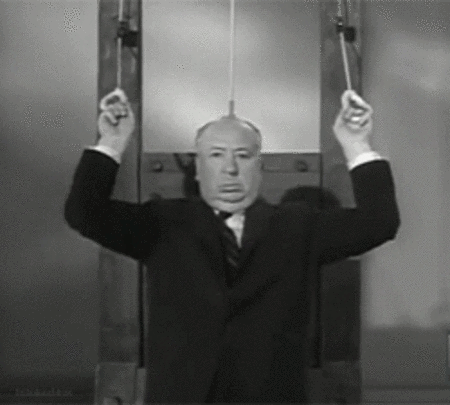
Bit of a cheat here. Alfred Hitchcock Presents actually started in 1955 as a half hour anthology show, but in ‘62 the show got a revamp and was extended into a full hour tv series. I knew I wanted The Twilight Zone to be covered in my episode one recap, but ‘The Master of Suspense’ couldn’t be forgotten. While The Twilight Zone reveled in the surreal and supernatural, Alfred Hitchcock pioneered the thriller genre and made real life seem dangerous, horrifying, and other worldly.
4. Doctor Who (1963 - present day) vs Star Trek (1966 - present day)

Just like how westerns dominated the air waves during the 50s, science fiction was the center of the cultural zeitgeist of the 60s. From Lost in Space to My Favorite Martian, space aliens and robots were everywhere. So naturally I had to name drop the two sci-fi juggernauts that still air to this today. If you thought that the rivalry between Star Wars and Star Trek was bad then you’ve never seen a chat full of Whovians and Trekkies duking it out over who is the better monster, the Borg or the Cyberman. But which one has the more influence over Wandavision?
Well Star Trek owes it’s existence to sitcoms. As with The Twilight Zone before it, Star Trek was produced by Desilu Productions and it’s co-founder and CEO, Lucille Ball, was the series biggest supporter behind the scenes, lobbying for it when it faced early cancelation. As with all things sitcomy, everything ties back to I Love Lucy in the end. However despite that little backstory, it would seem that the series has very little to do with Wandavision itself beyond being quintessentially American.
I would argue that Wandavision owes much to Doctor Who though. Arguably more so than any show mentioned in this retrospective. Time travel, alternate realities, trouble in quite suburbia, brainwashing, people coming back from the dead, ect... just about every trope you can find in Wandavision has also appeared in Doctor Who at some point. As a series that can go anywhere and do anything, Doctor Who was a pioneer of marrying genres in new and interesting ways.
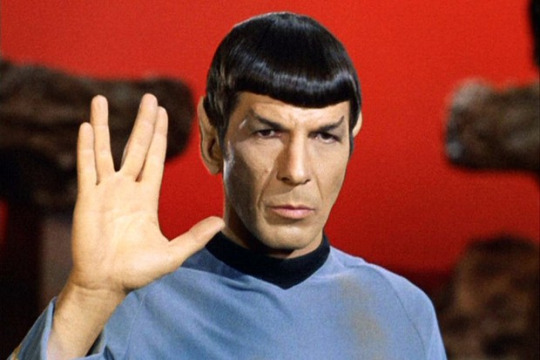
5. Bewitched (1964 - 1972) and I Dream of Jeannie (1965 - 1970)

It’s hard to pick one series over another because they’re essentially the same show. A mortal man falls in love with a magical girl who upends their lives with magic filled hijinks as they try their best not to have their secret discovered by the rest of the world. And both have their fingerprints all over the DNA of Wandavision.
There’s only two core differences; Samantha and Jeannie have completely different personalities, with Sam being confident and knowledgeable and Jeannie being naïve and oblivious, along with their relationships with their respective men, Sam and Darrin being married and in love at the start of the series and Jeannie chasing after Tony in the beginning in a will they/won’t they affair, finally only getting together in the last season.
6. The Munsters (1964 - 1966) vs The Adams Family (1964 - 1966)

Fans of these two shows are forever sadden that there never was a crossover between them. Because they’d fit perfectly together. Both shows are about a surreal and macabre family living in American suburbia and disrupting the lives of their neighbors with their otherworldly hijinks. Sound familiar?
The main difference between the two shows is the way the characters viewed their placement in the world they inhabit.
The Munsters were always oblivious to the fact that didn’t fit in. They just automatically assumed everyone had the same personal tastes as them. Whenever they encountered anyone who behaved strangely around them they would write that person off as being the odd one rather than questioning themselves. As such the main cast was structured like a stereotypical sitcom family who just happened to be classic movie monsters.
The Addams were well aware that they were abnormal and they loved it! They lived life with in their own little world and didn’t care what anyone thought of them. As such the characters were far more colorful and quirky as individuals but there was little in the way of refences to other horror franchises beyond just a general love of the twisted and strange.
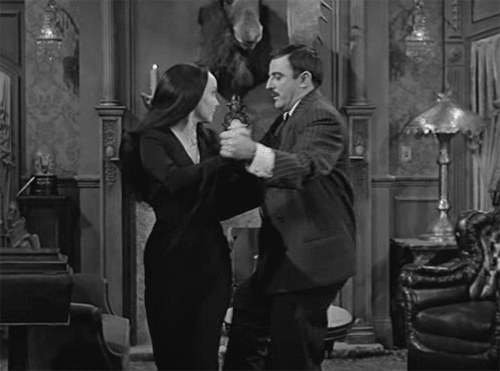
7. Green Acres (1965 - 1971) and the Rual-verse (1962 - 1971)
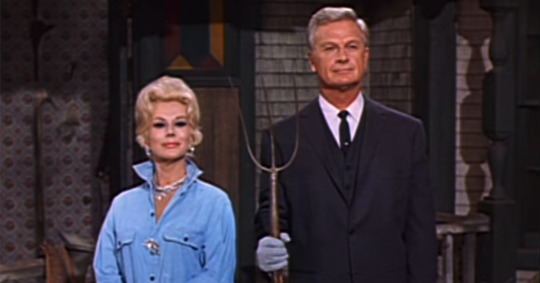
So the MCU is not the first franchise to bring viewers an interconnected universe to the small screen. Far from it, as sitcoms had been doing this for decades, starting with the ‘rualverse’. Beverly Hillbillies, Petticoat Junction, and Green Acres were all produced by the same company and were treated as spinoffs of each other, complete with crossovers and shared characters and sets.
Of the three, the last show, Green Acres, has the most in common with Wandavision. A well to do businessman and his lovely socialite wife settle down in small town America on a farm in order to get away from the stresses of city life, only to find new stresses in the country. Eva Gabor, herself a natural Hungarian, plays the character of Lisa as Hungarian making her one of the few non-native born Americans on tv screens during the cold war. Despite her posh nature and original protests to the move, Lisa assimilates to the rural life far easier than her husband, Oliver. Who, as the main comedic thread, can’t comprehend his new quirky neighbors’ odd and often illogical behavior.

8. Hogan’s Heroes (1965 - 1971) and Get Smart (1965 - 1969)

So as comic fans have been quick to point out, it’s looking like both A.I.M. (Hydra) and Sword (Shield) will be players in the story of Wandavision. To commemorate that here’s two shows to represent those opposing sides. Although in truth, neither series has anything else in common with each other but I need to condense things down someway.
In Hydra’s corner we got Hogan’s Heroes. A show all about taking down Nazis from within.
I love, love, love, ‘robin hood’ comedies where a group of con artists try week after to week to pull one over the establishment. The Phil Silvers Show, Mchale's Navy, and Top Cat, just to name a few examples are all childhood favorites of mine. However while those shows had a lot of morally ambiguous characters, Hogan’s Heroes has very clear cut good guys and bad guys, cause the bad guys are Nazis and the show relentless makes fun of the third reich as should we all. In fact I was watching Hogan’s Heroes while waiting for the GA run off election results. Fortunately my home state decided to kick out our own brand of Nazis this year.
For Shield, we got the ultimate spy spoof, Get Smart. Starring, Inspector Gadget himself, Don Adams, as the bumbling Maxwell Smart. Get Smart, is a hilarious send up of Cold War espionage but the real selling point of the show, imho, is Max and his co-worker 99′s relationship. You can cut the sexual tension in the air with a knife all while laughing your ass off.
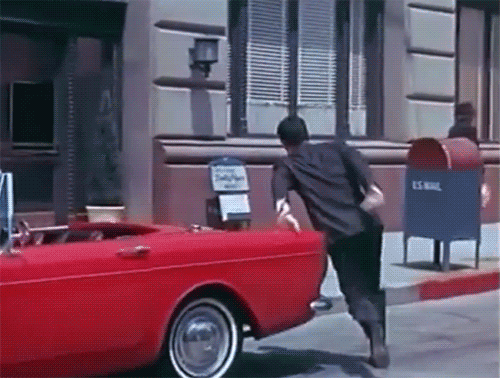
9. Batman (1966 - 1968)
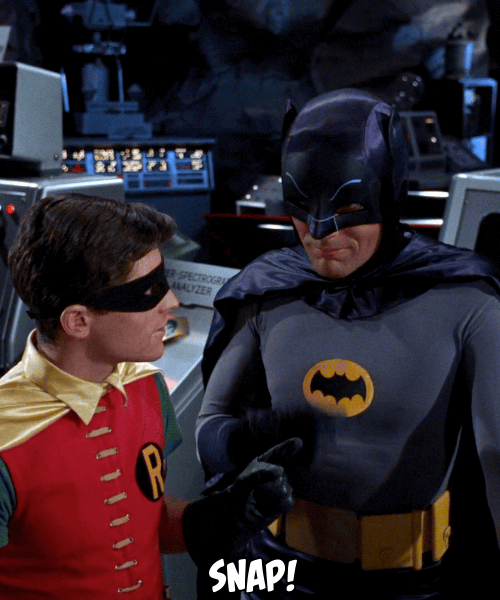
First was Superman and then came Batman. Yet while Superman was a serious action show, Batman was a straight up comedy. Showcasing that superheroes could indeed be funny.
Also shout out for Batman being the only show on this list to have an actual crossover with it’s competitor, The Green Hornet.
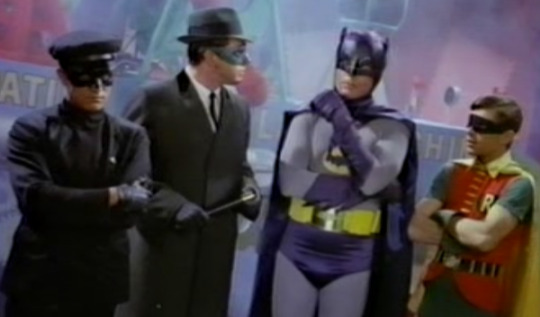
10. Julia (1968 - 1971)

Since episode two features the first appearances of Herb and Monica, let’s highlight the first black led sitcom since the cancelation of Amos ‘n Andy over a decade earlier. The show focuses on single mother and military nurse, Julia, as she tries to live her life without her recently decease husband, who was killed in Vietnam, as she tries to raise their six year old son on her own.
The series is cute. It’s more of a throw back to earlier family sitcoms where there’s no fantasy and life lessons are the name of the game. It’s the fact that the main character is a single black woman is what made the show so subversive and important at the time.
Runner Ups
There’s much good stuff in the 60s, so here’s some others that didn’t make the cut but I would recommend anyways.
Car 54, Where Are You? (1961 - 1963)
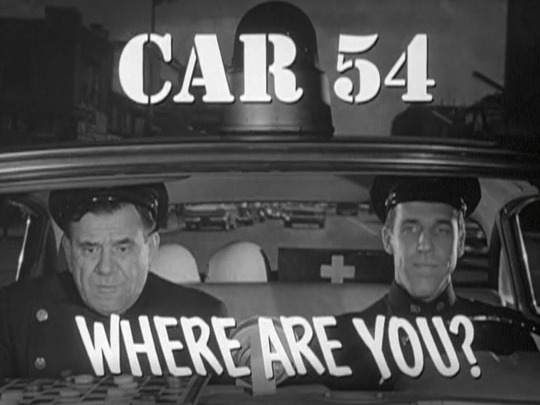
I call this the Brooklynn 99 of the 1960s. Bumbling but well meaning Officer Toody longs to do good in the world and help anyone in need, but often screws things up with his ill thought out schemes. He often drags his best friend and partner, the competent but anxiety riddled, Muldoon into his escapades.
Mr. Ed (1961 - 1966)
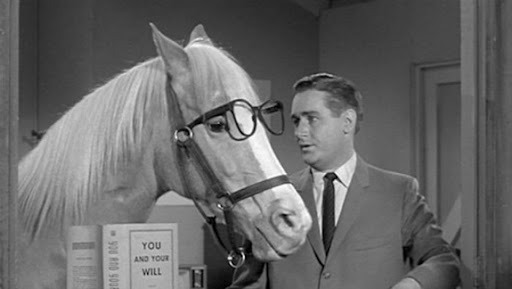
The grandfather of the sarcastic talking pet trope.
The Jetsons (1962 - 1963 and 1985 - 1987)
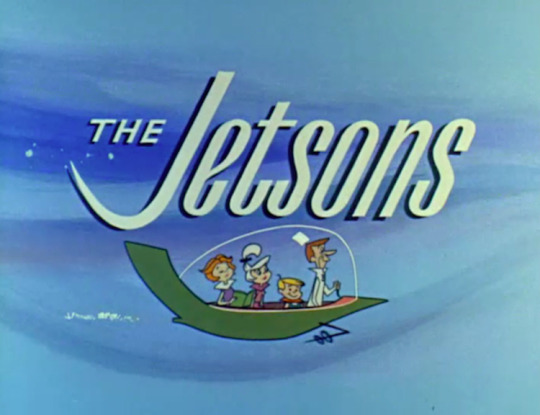
Hanna-Barbera often took popular sitcoms and just repackaged them as cartoons with a fantasy theme to them. The Jetsons has no singular show that it rips-off but is rather more a grab bag of sitcom tropes that feature, robots, computers, and flying cars.
The Outer Limits (1963 - 1965)

The Outer Limits was The Twilight Zone’s biggest competitor in terms of being a sic-fi/horror anthology series.
Gillian’s Island (1964 - 1967)
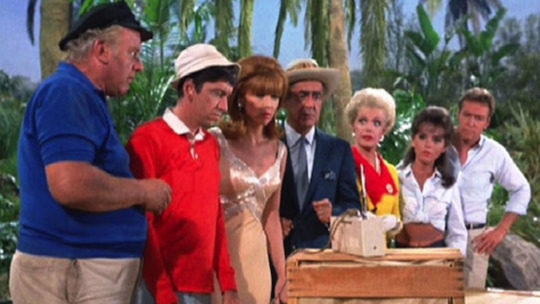
The only comparison to WandaVision I could think of was that this is a sitcom about people being trapped in one place. But by that point I was running out of room on the list. Still it’s one of the funniest shows on here.
So yeah, this took longer than expected cause there’s a lot, here. Hopefully the 70s will be easier. Which I’ll post on Friday.
114 notes
·
View notes
Note
Do you think the DC fandom maybe, Infantilizes Tim a little too much? Like for a rich kid character who's main trauma for a long time was a getting left home alone too much there's an oddly amount of meta abt how much how much his parents hurt him~ compared to, y'know the two poor characters who grew up with physically abusive dad's+druggie mom's, or the two that were raised assassin cult's, etc
…well, yeah, I do kind of think that? His whole schtick for so long was being too old for his age in ways that didn’t sacrifice his jokey, relatable teenager energies. It’s weird how little of that we see anymore, sometimes.
And then DC broke him and discarded him and he’s sort of awkwardly hanging around getting reimagined as more woobie with every fan generation. It is weird!
But tbh I do get it. And I think the reason his parents’ failure of him and his vulnerability get played up so much, and Jason and Steph’s sufferings (while used a lot for things like motivation and context) not dwelt on quite so much in the same lugubrious style, are kind of the same reason.
Which is that canon didn’t commit to it. Jason and Steph’s experiences with bad parenting were foregrounded and retconned more dramatically awful several times. (There’s some definite classism in how that was approached imo, and I’m never budging on being mad about DC retconning out Catherine being sick and then ignoring her forever in all Jason characterization because a drug death invalidates a person ig, great message during the opioid crisis guys.)
They engaged and coped with it–Steph (and Cass, our #1 canon batfam parental abuse victim) pretty directly, Jason a little less so because of the dubious and fluctuating canon status of most of the content more specific than ‘poverty, homelessness, theft, parental drugs and crime in there somewhere,’ so most of his parent issues have been focused on Bruce. He sure has dug into them tho. 😂 Rarely well or productively, thanks DC, but it’s explicitly part of his character, is my point.
Whereas upper-middle-class Tim was always treated by the narrative as fortunate and unharmed by his experiences with his parents. Even though they were clearly behaving badly in several ways, and Tim showed signs of being harmed by it.
Tim outside of immediate moments of frustration always was of the opinion he was Fine, and Very Fortunate Actually.
Therefore a huge chunk of the numerous everyone who’s got parent-related mental and emotional harm, but has struggled to have that validated and hasn’t responded with a lot of anger toward the parent, identifies with Tim. The only one who’s never really lashed out at his parents for fucking up with him. The one who still needs it explored, because canon ultimately didn’t.
[editing post to put in a readmore because lol it’s long, post otherwise unchanged]
(Dick obviously didn’t ever have any Issues with the Graysons, but he Angry Teenagered at Bruce so hard it changed Bruce’s characterization permanently, rip.)
The things Jason, Steph, and Cass have been through are dramatic, obvious, and fit stereotypes because that’s what they’re based on.
That’s important content to have, but because it’s right out there in your face even people who identify with it quite a lot are less likely to feel the need to work all the way through it again in fanworks. That part’s there. It’s text.
(Well actually Jason having been physically abused kind of wasn’t? I think? It was mostly assumed on the basis of stereotyping and Jason’s not caring about the man much even as he felt possessive of information about his death, which is valid. I don’t actually know what’s up with Willis now, Lobdell did some weird shit that lacked emotional resonance or staying power because he’s Lobdell and has no soul.
Cass’ wandering years are also ludicrously underdeveloped. But very very few comics fans or writers can personally relate to being amazing child warriors with no grasp of language living feral under bridges. That part of her life is consistently represented in terms of absences, in terms of its deviation from the norm and the deficits of normality it left her with, which is typical but unfortunate.)
-
The interesting things to do with these characters are often informed by the bad stuff in their childhoods, but there’s relatively rarely that much more to say about the fact that those things were bad. They know they’re bad. They’ve had a lot of on-panel rage about it, as discussed above. Steph and Cass both beat the shit out of their dads.
Jason is, in fandom especially, a sort of Platonic ideal of a kid who’s mad about his bad childhood and really bad at figuring out where to point that rage.
(Damian is a whole other kettle of fish, because he’s been lumbered by so many detailed retcons coming so fast no two people can seem to construct compatible models of what his early childhood was like, and even more because he’s still ‘a child’ enough that he’s necessarily in a different stage of processing than someone who’s officially only a few years older than him at this point, but still functionally 8 and also 20 years older, and whose parents are no longer in the picture to continue screwing up.
Also there’s no question that if he brings up an abusive thing the League did, he will be validated by his current environment about his realization that it was in fact bad. There’s a lot of fic on that theme! But it doesn’t have the same tone precisely because it is usually understood that that support will be there if he wants it. Realizing that his previous context contained things that were wrong keeps being made the focus of his arc.)
The badness of Tim’s childhood, on the other hand, was mainly in subtext. Even when we were clearly meant to understand Jack was fucking up, like when he canceled plans with Tim at the last minute to go on a date with Tim’s stepmother, or that infamous time he came to apologize for not being a great parent and got mad Tim was distracted by a crisis on TV so he flew into a rage and took the TV and smashed it and was like ‘that’ll teach you,’ it wasn’t leaned into.
The story didn’t treat Jack as a minor villain to be overcome but like a sort of environmental hazard of childhood, like homework, to be endured and coped with. Tim said things like ‘it’s fine’ and ‘at least he left the computer.’
(And like. It’s not about having a TV and computer in his room. It’s about not letting a child have boundaries, pointedly not respecting a child’s possessions, creating an emotionally insecure environment, punishing minor infractions in proportion to their momentary impact on your own ego, physically lashing out at a proxy for the child…)
Rather like Tom King later didn’t understand about the punching from Bruce, whoever did that story (probably Dixon? I don’t care enough to check) did not understand how serious a case of bad parenting that scene was. That is most definitely textbook abusive behavior. (It’s a hell of a lot more common abusive behavior than being a lame supervillain or shooting you when you screw up, and a lot more specific than ‘was a thug, might have hit me, dead now.’)
And Tim was never allowed to be mad at his parents about it. It was fine. He needed to be ignored so he had the freedom to be Robin. He deserved his dad being mad at him because he was keeping secrets. He complained too much, although objectively he did not.
The universe punished him for ‘complaining,’ more than once. We cut straight from him shunting aside his disappointment that his postcard from his parents was just to say they weren’t coming home yet after all with ‘if it will stop all the fights they’ve been having lately it’s more than fine’ to them getting kidnapped.
He agreed not to come on the rescue mission. His mom never made it home, and his dad was in a coma for a while. And then ultimately Jack died as a result of Tim’s decision to be Robin, immediately after finally deciding to accept it.
So Tim walks around feeling a huge burden of responsibility for his parents’ deaths, and completely unable to process any hurt they did him as real or valid, especially in comparison with the far more blatant awfulness other people have been through, and canon is clearly never going to address it. Or even acknowledge it properly.
Let me repeat that because it’s kind of my main point:
People are fixated on getting Tim’s emotional abuse validated because that’s an incredibly important step in recovering from emotional abuse, and it’s one canon consistently denied him.
How ‘bad’ things are ‘in comparison to’ problems other people have is a bad and unhealthy way to engage with trauma. Okay? That’s just a really harmful framework to apply to pain.
It’s also a way that both Tim and people with experiences similar to Tim’s are encouraged to engage with their own experiences, compounding the existing problems.
So. Not a form of relatable DC was ever actually aiming for when they tried so hard (and pretty effectively) to make him a relatable character as Robin, but an enduring one for a lot of fans.
-
So Tim’s childhood is a natural target for fanworks in a different way than the traumas that have been made explicit and taken seriously by the text. And then a lot of that got compounded by the way the introduction of Damian as Robin was handled, and the lack of resolution that got. And his current status as not quite having a place in the family anymore.
So between the level of projection encouraged by that context and how relatively difficult to access Tim’s Robin run has become ten years after the fact, this has led to a lot of fanworks on these themes that are based mostly on other fanworks, and stray further and further from the original content.
So at this point there’s an entire wing of Tim’s fandom wherein this side of him has expanded enormously, and he primarily exists to suffer, frequently in ways that 1) escalate to a point that is inarguably ‘valid’ and hard to dismiss and 2) set him up to rebound from it in whatever way the writer finds emotionally satisfying or useful–being ultimately cared for and reassured by people who value him (the most infantilizing option but like, popular for obvious reasons), or unveiling his brilliant scheme that was causing him to pretend to be passive in the face of mistreatment, or turning around and using his genius ninja skills to wrest power back from his abusers, or just laying down some sick burns about being treated fairly.
But not that many of the last one, because that’s mostly done with other batfam members.
Tim’s become a vehicle for a lot of vicarious coping that Steph and Jason just aren’t appropriate for, because they get angry and they get even. And those are stories that exist already, so there’s less scope for telling your own.
And because Jason’s reaction pattern is ultimately so masculine (i’ll make them all sorry! with my guns! blam blam!) while Tim’s is pretty gender-neutral, the demographics of fanfic mean that the bulk of the people using Tim vicariously in this manner are female-aligned, which has over time feminized this archetype of him a lot. Sometimes in ways I find really uncomfortable, like there’s a lot of forced pregnancy stuff which activates my panic buttons. x.x
But, ultimately, it’s fandom. People are going to do what they’re going to do, DC in their perpetual fail has hung Tim out to dry in narrative terms, and I’d rather the people who are using Tim for victimization narratives over the people who can’t dismiss or discredit him fast enough now that his position has been filled. 🤷♀️ What we gonna do? Fave’s in an awkward spot. DC hates us. This is the life in this comic book pit. XD
-
Also if you’re the same anon who left me a callout about op of that weird Steph post in my inbox, or if you aren’t @ that person, 1) I refuse to get involved so I’m not answering that ask 2) those aren’t even particularly dramatic fandom crimes? That’s pretty normal? That’s just…Caring Too Much About Ships And Disagreeing With Me.
Do I also feel those opinions are kinda bad? Yeah. But I disagree with everyone about something. Chill.
#tim drake#child abuse#characterization#fanworks#fandom#batfam#emotional abuse#neglect#validation#projection#vicarious re-parenting of self#coping mechanisms#recovery#i ramble#this took too long already i'm not rewriting it into a well-organized essay#opinions#comics#in the end we are all Superboy Prime#hoc est meum#a nonny mouse#ask
352 notes
·
View notes
Text
My opinion on some of the Netflix Sandman rumors
We fans don’t have much in the way of substantial news about The Sandman Netflix series. All we have are rumors and gossip. I have compiled some of the rumors here along with my opinions on those rumors. Consider this a disclaimer. I am only a fan. I do not have any inside info. All the rumors here are ones that can easily be found on various sites online. Now to begin...
Rumor: Morpheus will be captured in 1916 but will not escape until present day.
This rumor has been confirmed true by Neil Gaiman on his Tumblr account and other Social media websites. In my opinion this was wise because it enables Morpheus’ capture to continue to overlap with the real-world sleeping sickness outbreak of Encephalitis Lethargica.
Rumor: Michael Sheen is playing Lucifer.
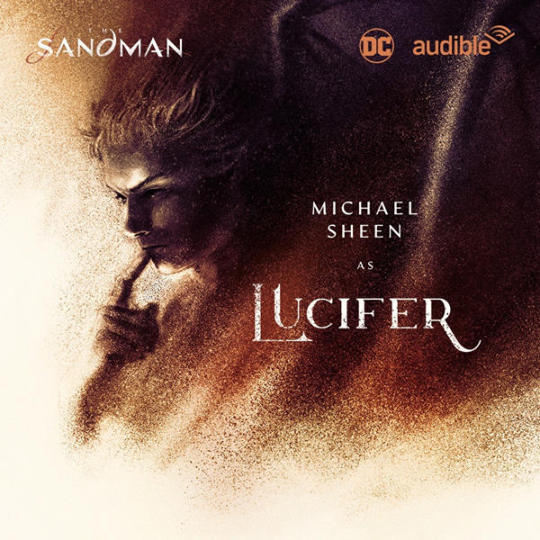
This rumor was debunked months ago by Neil Gaiman but I surmised that the one who started the rumor had found out he was playing Lucifer for The Sandman audio drama and had gotten confused. I was right. I DO however suspect Michael Sheen and possibly David Tennant will have roles in The Sandman Netflix series, just not the same role Michael Sheen had in the audio drama.
My Opinion: I’m all for Michael Sheen having a role in The Sandman Netflix series. Him and David Tennant.
Rumor: Doug Jones is going to be in The Sandman as a supporting character.
This rumor comes from two clues. The first being that Neil Gaiman has spoken about his like of Doug Jones and Guillermo Del Toro almost did a Sandman adaptation with Doug as Morpheus. Doug Jones even brought this up recently, which suggests that the subject might be on mind.
My opinion: Doug is an excellent character actor and I want this to be true. He should be in Sandman. I love Doug. And there are plenty of characters he could play. Lucien, Mervyn Pumpkinhead, Doctor Destiny, various nightmares.
Rumor: Liam Hemsworth or Dacre Montgomery will play The Corinthian.
Opinion: I like Liam Hemsworth. He deserves a shot but Dacre is also good.
Rumor: Tom Sturridge is playing Morpheus.
Opinion: I am 90% sure this rumor is true. There are a number of sources claiming the same thing. Also just google how the man looks. I think he’ll do a fine job. I thought Oliver Farnworth would have been excellent too but I’m sure Tom Sturridge would be fine.

Rumor: The Netflix Sandman series will see Dream take many forms including a female form.
Opinion: This isn’t really new. We saw Dream’s feminine side in Overture. If it bothers you to see Morpheus might have a feminine side, you probably shouldn’t be watching something like Sandman anyway.
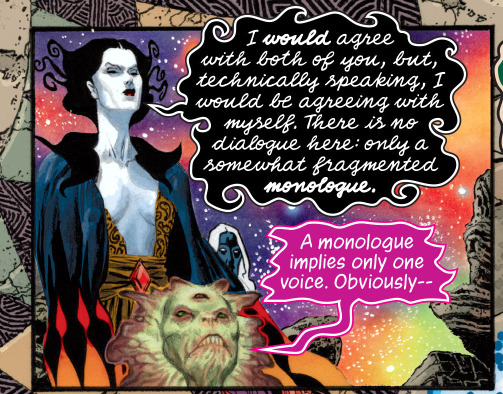
Rumor: Death will be played by a black woman.
The source of this rumor comes from Neil Gaiman saying something about loving the actress chosen for Death but feeling some people will complain.
Opinion: ...So? She’s an Endless. She can look any way she wants. I would have liked to have seen Jamie Chung in the role though. She voiced her for the Death short that accompanied the Wonder Woman: Bloodlines Blu Ray.
Rumor: Morpheus’ extended capture will effect his reunion with Hob.
My opinion: Uhhhh Duh.
Honestly though this makes me VERY curious as to how their reunion will play out. I hope it is just as sweet as the comic.
Rumor: The Corinthian will appear fairly early in the series and even advise Roderick Burgess how best to contain Morpheus.
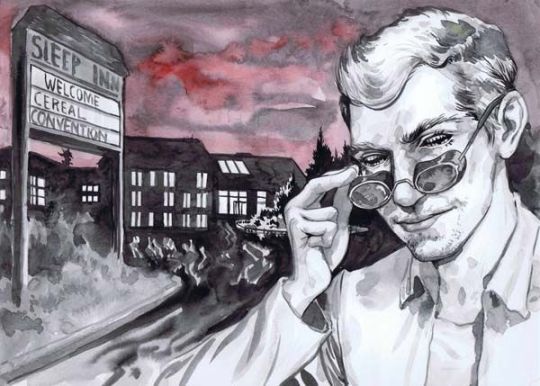
Opinion: Well, according to the leaked Corinthian audition this is true. I don’t mind it at all. It makes sense. It fits.
Rumor: Alexander Burgess’ story is now more sympathetic and he as well as his father will age slower because of Morpheus’ capture.
Opinion: This seems likely based on certain leaks. And I kind of hope this means Morpheus will be able to punish Roderick and not Alex.
Rumor: Alex will now have an older brother who died during World War 1, a brother that Roderick preferred, and he takes out his grief on Alex in abusive ways. it also gives Roderick a new motivation for wanting to capture Death.
Opinion: This is likely true based on certain leaks from last February. I have mixed feelings about this because sometimes parents are just assholes. They don’t need a tragic loss to set off their abusive behavior. It also made Roderick worse (in the comics) that he treated his only (known) son the way he did. It’s been recently established in the comics that John Dee was actually Alex’s half-brother. I guess it all depends on how this is done.
I also don’t think Roderick needs to be grief stricken in order to want to control Death. This is a cliché, a cliché we saw in Disney’s Gargoyles and even in Hercules and Xena. Someone loses someone they love and tries to capture Death in order to bring them back. Roderick doesn’t need this trope. He was an occultist who wanted to be a big shot in the world of early twentieth century magick users. In my opinion that should be enough but I’ll keep an open mind.
Rumor: They were supposed to start filming in May but it was delayed to late October because of Covid.
This one is true.
Opinion: Hurry up!
Rumor: Roderick Burgess has no real magick in the show.
Opinion: Sadly this is likely true based on a character description leak from the casting call. I shall miss seeing Sykes’ head explode... Honestly I kind of hope this is wrong. I’m tired of magick being diminished in comic book TV and film.
Rumor: The first season of Sandman will combine Preludes and Nocturnes with The Doll’s House.
Opinion: This is likely true. I’m fine with it. It might flow better for TV this way.
Rumor: The “A game of you” storyline will have trans people writing.
Opinion: This makes sense And this is pretty much already confirmed true.
Rumor: The Netflix show will have the same cast as the audio drama.
Opinion: Though I would not mind this, I know it is not true. This is likely the result of an IMDB listing for the audio drama mistakenly calling it a show and some fans mistaking that IMDB page as being the one for the Netflix series.
Rumor: The Netflix Sandman series is canceled and the audio drama is all we’re getting.
This rumor is absolutely false! It’s a stupid rumor made by those who had no idea the audio drama was happening before the pandemic even hit. The audio drama is not compensation because there will not be a Netflix show. Both will exist.
Opinion: Shame on those leaping to this conclusion and spreading it as fact.
Rumor: A character named “Ann” is being cast and she’ll be a major recurring character.
Opinion: I’ve seen this sort of thing before. It’s how you hide what character they are trying to cast. Clearly this is a major female character for the show and probably was a name used as a place holder for Death of The Endless or even Rose Walker. I’m not too concerned about this. Some fans are upset and already raging that they’re making up a new character just for the show, ala Chloe Decker in Lucifer. I don’t think there’s anything to worry about here.
Rumor: Tom Ellis will not be playing Lucifer.
Opinion: Tom Ellis has wanted to move on from Lucifer for a while. He wants season six of Lucifer to be its last. Let him move on. Neil Gaiman also wants his Lucifer to be different from the Lucifer TV show version. The Lucifer TV series deviated heavily from the comics and it might confuse people with the big differences in lore. It is probably for the best that Tom Ellis not play Lucifer.
Rumor: The Sandman is why Lucifer is being canceled.
Opinion: No. Lucifer has been canceled three times now. In fact the first time it was canceled The Sandman TV series had not been picked up by Netflix yet. Lucifer has had six seasons. For a paranormal police procedural that’s a good, long, run. Not everything can be Supernatural. Forever Knight (and most shows of that type) only had three seasons. Lucifer out lived the norm for its type of show and survived two cancelations. Let it go. Do not blame Sandman. The Sandman is what gave us Lucifer, not took it away. The Sandman is where the story of Lucifer quitting, opening Lux, and taking up piano came from.
Rumor: The Sandman is the most expensive show DC has ever made.
According to Variety this is true.
Opinion: It probably has to be expensive. Look at all the stuff they need to show us, the sets and special effects needed.
Rumor: Lucien might be played by a woman.
Apparently this rumor started because some of the Morpheus auditioners let slip that they auditioned with a woman as Lucien.
Opinion: I’m not sure how I feel about this. I love the character of Lucien. A a woman version might take a little getting used to. I don’t hate the idea, I just prefer how he appears in canon. Further note, I kind of hope he has a full head of hair like he does in the recent comics. There is a very high chance she was just reading his lines since at the time the role being cast was Morpheus, not Lucien.
Rumor: The Sandman could air as early as Summer of 2021.
Opinion: *Insert bitter laugh here.* I wish...
Rumor: Alexander Burgess is gay.
Opinion: And in other news water is wet!
Rumor: Desire will be played by someone who identifies as Genderfluid or nonbinary.
Opinion: This is very likely true.
20 notes
·
View notes
Photo

RIP Blue Sky Studios...
Established in February 1987... Iconic commercials, early innovation in CGI, packed to the brim with top talent, a rare East Coast-based house, and one of the first studios in a post-Don Bluth age to really challenge Disney and Pixar in the feature animation field...
Gone.
Once a subsidiary of 20th Century Fox, The Walt Disney Company had them since early 2019 after the acquisition of their parent company. It looked as if Disney was going to keep them around, despite already having two powerhouse animation studios making family features for them. I wondered back in the day if Disney could rebrand Blue Sky as a sort-of outre little studio that did more experimental, quirky fare as opposed to the more digestible works of Disney Animation and Pixar.
Even before the COVID-19 pandemic hit, signs were rather troubling. Despite a management change, you had the rather ho-hum marketing for SPIES IN DISGUISE. To me, Disney sort-of let that one disappear between FROZEN II and STAR WARS: THE RISE OF SKYWALKER. I found SPIES IN DISGUISE to be a fun little movie, with a timely pacifist message and memorable gags. Sadly, it did not make its money back. Even more troubling was the constant delaying of NIMONA, an adaptation of Noelle Stevenson’s webcomic of the same name from FEAST and PEARL director Patrick Osborne. From the rumblings I’ve heard, it looked to be an innovative CG film and a next-level family film in general. Like a next SPIDER-VERSE. It was to be released January 14, 2022. 70% of the film was completed by this point... It is no longer a reality, Blue Sky is done...
450+ animators and staffers out of a job during an awful worldwide crisis...
Why couldn’t The Walt Disney Company just sell off Blue Sky Studios to a distributor looking for more animation to stock up on? If they didn’t need more than two animation studios (see the shuttering of their own Disneytoon Studios in early 2018), why shutter them and wait so long to do so? I know that absorbing competition and killing it is nothing new, but this is **expletive** for a multitude of reasons. Multiple talent out of a job, more movies and work squashed, a nearly-completed film likely dead. (It would be great if it was instead on the market, so that someone could snatch it up and complete it, but we shall see...)
Blue Sky Studios were no slouches. ICE AGE established them, big time. In fact, I’d say they helped show the industry that the features world wasn’t just Disney’s game anymore. Disney had seen rivals in feature animation in the past, notably Don Bluth and Ralph Bakshi, but they continued through the decades while Bluth and Bakshi’s feature opportunities waned. Blue Sky, alongside DreamWorks and a fledgling Sony Pictures Animation, changed that, and they were here to stay. And it’s quite sad that Disney had to acquire this notable studio and shut them down, they would’ve thrived elsewhere because of the success of their previous work and the amount of talent they have/had over the years.
They have a pretty distinct body of work, too. ROBOTS, HORTON HEARS A WHO!, RIO, EPIC, THE PEANUTS MOVIE, FERDINAND, SPIES IN DISGUISE. Some of them, I’d argue, were quite innovative. ICE AGE stabbed at cartoony, Looney Tunes-esque humor and visual design. The work in that movie rung more Warner Bros. than it did Disney or something more naturalistic in design. Their later work embraced that kind of outlook as well, but you started seeing other studios doing this as well: DreamWorks with MADAGASCAR, Sony Animation with OPEN SEASON and CLOUDY WITH A CHANCE OF MEATBALLS, and so on. The antithesis to the ever-more-realistic Pixar styles. Then Blue Sky just straight up redefined the computer animated feature with THE PEANUTS MOVIE, which not only kept the comic strip aesthetic of Charles Schulz’s iconic characters and world, but adapted them to a computer animated world while doing something new in the process. PEANUTS MOVIE, along with similar pictures like THE BOOK OF LIFE and CAPTAIN UNDERPANTS, are indeed stepping stones to SPIDER-MAN: INTO THE SPIDER-VERSE and what lies beyond that feature. In short, Blue Sky played a big part in computer animation showing that it didn’t just have to look like Pixar movies, or most other computer animated works that were out at the time of ICE AGE’s early 2002 release.
Who knows where that could’ve all gone. NIMONA looked to be something new and exciting, something to really push things forward and widen the computer animation canvas. A musical called FOSTER also sounded like it had potential. When TWDC acquired 20th Century Fox (now 20th Century Studios), Fox Animation in general had several animated films in development, hoping to branch out beyond their one studio... All of that seemingly died after the Disney acquisition, with only Blue Sky and a couple of Fox primetime TV-showed based movies (i.e. THE BOB’S BURGERS MOVIE, another - and inevitable - SIMPSONS picture) left. Now Blue Sky is gone. More animation, gutted. And for what? Disney didn’t have to do this...
It’s even more egregious when you consider where Disney was in 1991... As opposed to now, 2021...
Think of this... Under the controversial Michael Eisner, The Walt Disney Company was willing to sink a massive amount of money into a project that had already been cancelled. Said project was given to blockbuster king Steven Spielberg, hit director Robert Zemeckis, and animation mastermind Richard Williams. This was not even a few years after Disney was a quiet establishment being circled by corporate raiders that could’ve ended them for good... And what came of it. WHO FRAMED ROGER RABBIT. An innovative animation-live action hybrid movie for a more adult audience. One of the biggest films of 1988, a bonafide blockbuster that Disney hadn’t seen in years, and more than lit the fuse of animation’s 2nd Golden Age.
Then, in 1990, a former animator of theirs turned big-time director realizes that a short story he wrote while at the company was still owned by them. That man was Tim Burton, and he expressed interest in revisiting that poem. A studio was set up, with similarly outre director and former Disney animator Henry Selick taking the helm. The result was an innovative stop-motion film that leaned more towards horror and German expressionism than something like BEAUTY AND THE BEAST did. The result was THE NIGHTMARE BEFORE CHRISTMAS in 1993. A respectable hit then, an iconic classic today. Without NIGHTMARE, would have ever gotten future stop-motion efforts like CHICKEN RUN and everything Laika has made?
Finally, in 1991, Disney makes a three-picture deal with a small computer graphics studio based out of Marin County. One of their main guys was a former Disney animator as well, similarly outed for being too ambitious. Their plan? Make the world’s first all computer-animated movie. That studio was Pixar, their first movie was TOY STORY. Need I say more?
The Disney of today would’ve never in these three instances. Blue Sky could’ve been their chance to really make some kind of a splash in a post-SPIDER-VERSE world. Various shorts made at Disney Animation (including Osborne’s own FEAST) suggested this, and some Pixar shorts as well... But nothing really came of this. In terms of features being put out by Disney Animation and Pixar, only parts of MOANA, INSIDE OUT, and SOUL put this kind of thing in a long-form format. Blue Sky, who operated on smaller budgets, could’ve been their arm for more experimental feature animation. I say this because while Disney doesn’t need to hog up animation, Blue Sky was owned by them, and I felt the best way to go about this was to re-establish them as a more experimental studio. Make the most of it, you know? But no, they had to shut it all down.
When a studio shuts down, I feel a chunk of the animation world is just broken right off... While some of the artists are apparently being welcomed into various Disney houses, it sucks to see a studio with its own identity and output gone. Of course, my hope is that everyone employed there will have somewhere to go by April (when the studio shuts down completely) and that maybe, just maybe a new studio could be formed up from the remains. (Think Don Bluth setting up shop upon his departure from Disney in 1979.) Somebody has to get their happy ending, right? I know it’s moot asking for such a thing in this hellscape business of massive octopus conglomerates engulfing everything into their eight tentacles, but...
I wish everyone involved well, and that they’ll prosper afterwards. I certainly hope the 3/4 completed NIMONA doesn’t remain unfinished. (Netflix? Someone?) I hope to see some good come out of this...
11 notes
·
View notes
Text
TV I Liked in 2020
Every year I reflect on the pop culture I enjoyed and put it in some sort of order.
Was there ever a year more unpredictably tailor-made for peak TV than 2020? Lockdowns/quarantines/stay-at-home orders meant a lot more time at home and the occasion to check out new and old favorites. (I recognize that if you’re lucky enough to have kids or roommates or a S.O., your amount of actual downtime may have been wildly different). While the pandemic resulted in production delays and truncated seasons for many shows, the continued streaming-era trends of limited series and 8-13 episode seasons mean that a lot of great and satisfying storytelling still made its way to the screen. As always, I in no way lay any claims to “best-ness” or completeness – this is just a list of the shows that brought me the most joy and escapism in a tough year and therefore might be worth putting on your radar.
10 Favorites
10. The Right Stuff: Season 1 (Disney+)
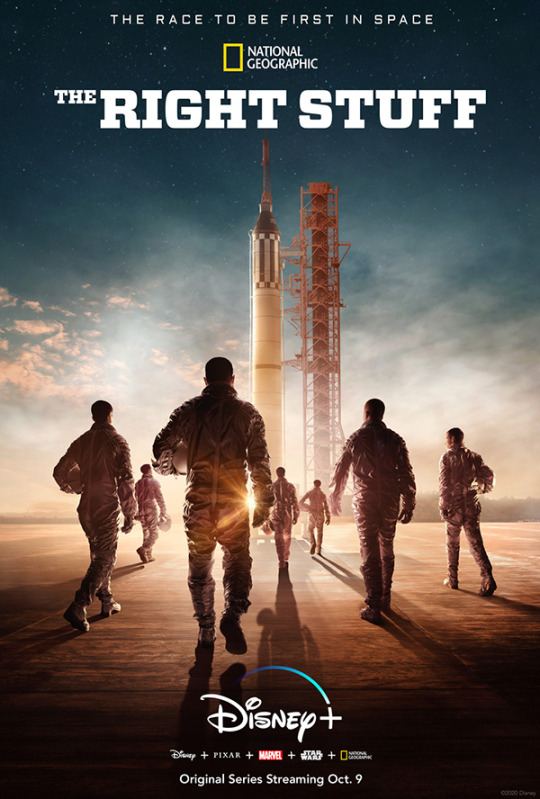
As a space program enthusiast, even I had to wonder, does the world really need another retelling of NASA’s early days? Especially since Tom Wolfe’s book has already been adapted as the riveting and iconoclastic Philip Kaufman film of the same name? While some may disagree, I find that this Disney+ series does justify its existence by focusing more on the relationships of the astronauts and their personal lives than the technical science (which may be partially attributable to budget limitations?). The series is kind of like Mad Men but with NASA instead of advertising (and real people, of course), so if that sounds intriguing, I encourage you to give it a whirl.
9. Fargo: Season 4 (FX)
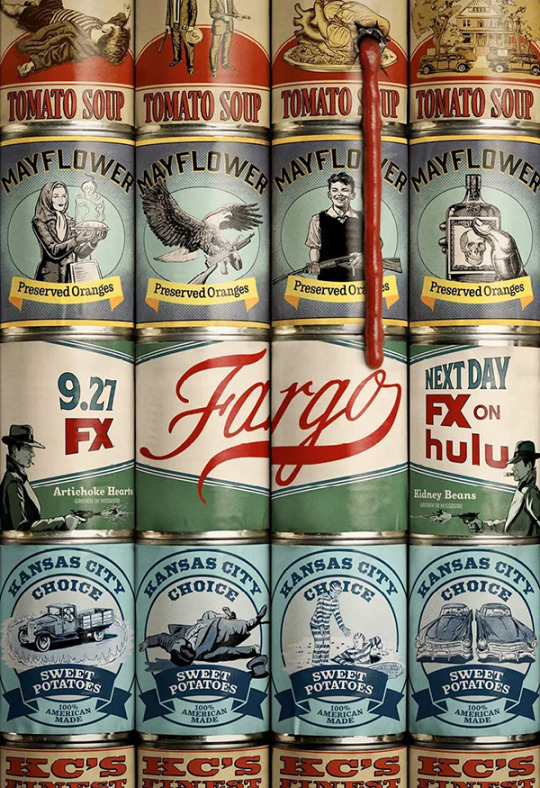
As a big fan of Noah Hawley’s Coen Brothers pastiche/crime anthology series, I was somewhat let down by this latest season. Drawing its influence primarily from the likes of gangster drama Miller’s Crossing – one of the Coens’ least comedic/idiosyncratic efforts – this season is more straightforward than its predecessors and includes a lot of characters and plot-threads that never quite cohere. That said, it is still amongst the year’s most ambitious television with another stacked cast, and the (more-or-less) standalone episode “East/West” is enough to make the season worthwhile.
8. The Last Dance (ESPN)

Ostensibly a 10-episode documentary about the 1990s Chicago Bulls’ sixth and final NBA Championship run, The Last Dance actually broadens that scope to survey the entire history of Michael Jordan and coach Phil Jackson’s careers with the team. Cleverly structured with twin narratives that chart that final season as well as an earlier timeframe, each episode also shifts the spotlight to a different person, which provides focus and variety throughout the series. And frankly, it’s also just an incredible ride to relive the Jordan era and bask in his immeasurable talent and charisma – while also getting a snapshot of his outsized ego and vices (though he had sign-off on everything, so it’s not exactly a warts-and-all telling).
7. The Queen’s Gambit (Netflix)
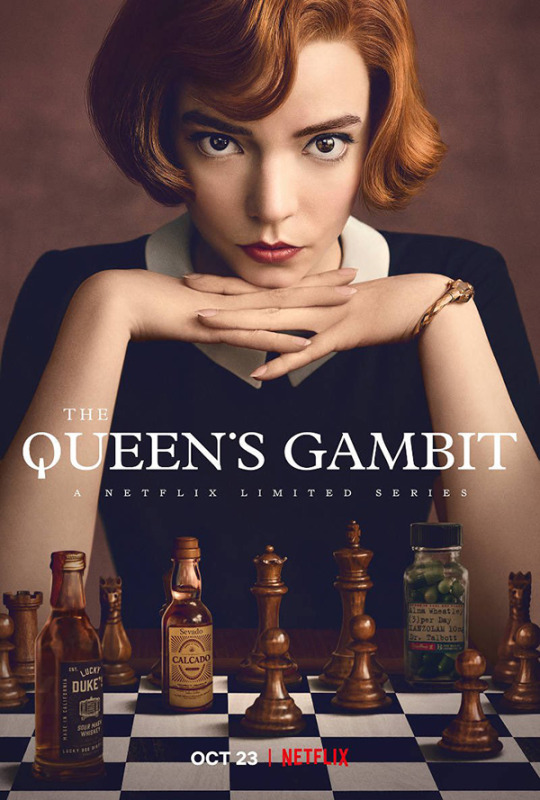
This miniseries adaptation of the Walter Tevis coming-of-age novel about a chess prodigy and her various addictions is compulsively watchable and avoids the bloat of many other streaming series (both in running time and number of episodes). The 1960s production design is stunning and the performances, including Anya Taylor-Joy in the lead role, are convincing and compelling.
6. The Great: Season 1 (hulu)
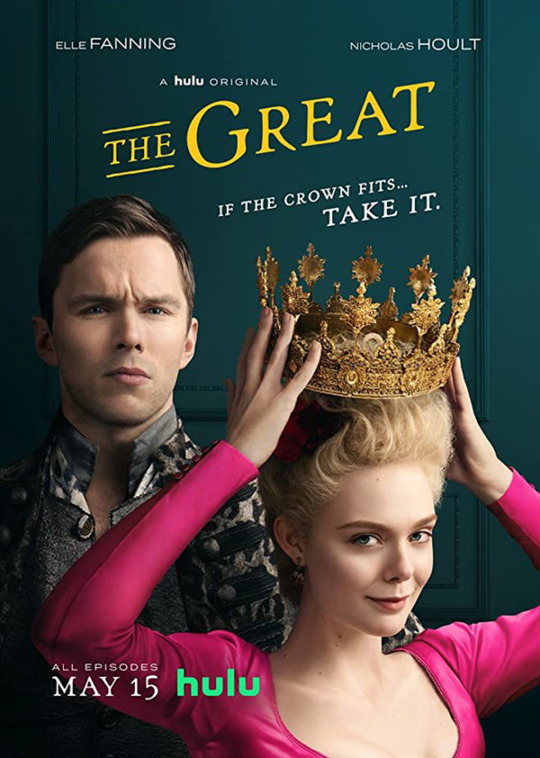
Much like his screenplay for The Favourite, Tony McNamara’s series about Catherine the Great rewrites history with a thoroughly modern and irreverent sensibility (see also: Sofia Coppola’s Marie Antoinette). Elle Fanning brings a winning charm and strength to the title role and Nicholas Hoult is riotously entertaining as her absurdly clueless and ribald husband, Emperor Peter III. Its 10-episodes occasionally tilt into repetitiveness, but when the ride is this fun, why complain? Huzzah!
5. Dispatches From Elsewhere (AMC)
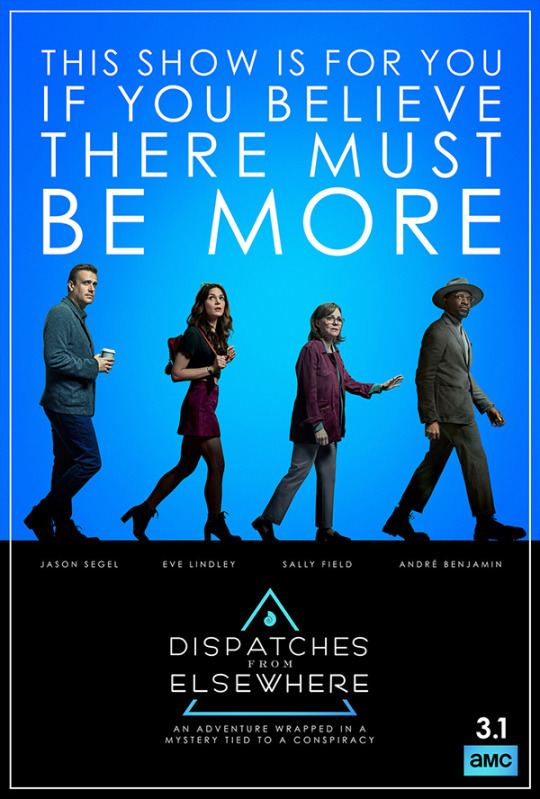
A limited (but possibly anthology-to-be?) series from creator/writer/director/actor Jason Segal, Dispatches From Elsewhere is a beautiful and creative affirmation of life and celebration of humanity. The first 9 episodes form a fulfilling and complete arc, while the tenth branches into fourth wall-breaking meta territory, which may be a bridge too far for some (but is certainly ambitious if nothing else). Either way, it’s a movingly realized portrait of honesty, vulnerability and empathy, and I highly recommend visiting whenever it inevitably makes its way to Netflix, or elsewhere…
4. What We Do in the Shadows: Season 2 (FX)
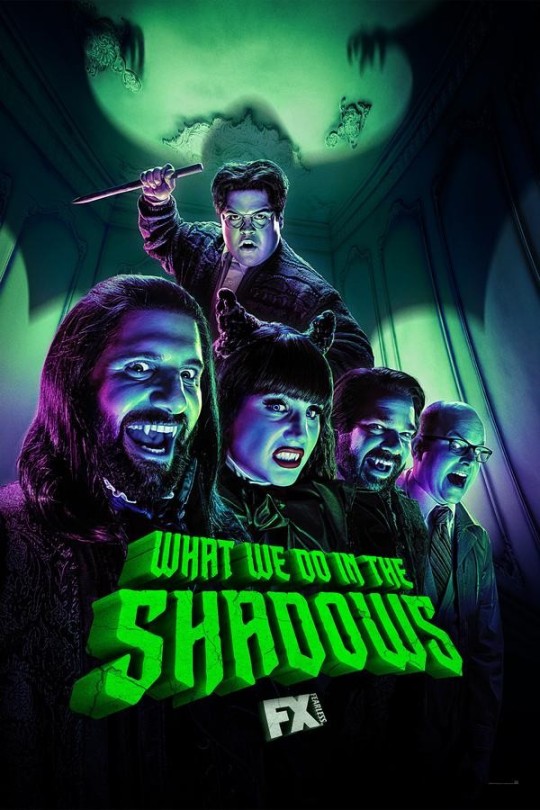
The second season of WWDITS is more self-assured and expansive than the first, extending a premise I loved from its antecedent film – but was skeptical could be sustained – to new and reinvigorated (after)life. Each episode packs plenty of laughs, but for my money, there is no better encapsulation of the series’ potential and Matt Berry’s comic genius than “On The Run,” which guest-stars Mark Hamill and features Laszlo’s alter ego Jackie Daytona, regular human bartender.
3. Ted Lasso: Season 1 (AppleTV+)
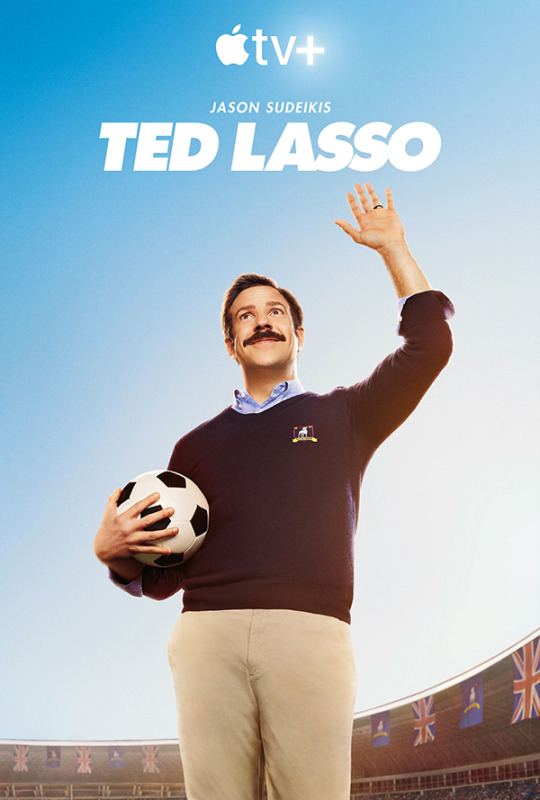
Much more than your average fish-out-of-water comedy, Jason Sudeikis’ Ted Lasso is a brilliant tribute to humaneness, decency, emotional intelligence and good coaching – not just on the field. The fact that its backdrop is English Premier League Soccer is just gravy (even if that’s not necessarily represented 100% proficiently). A true surprise and gem of the year.
2. Mrs. America (hulu)
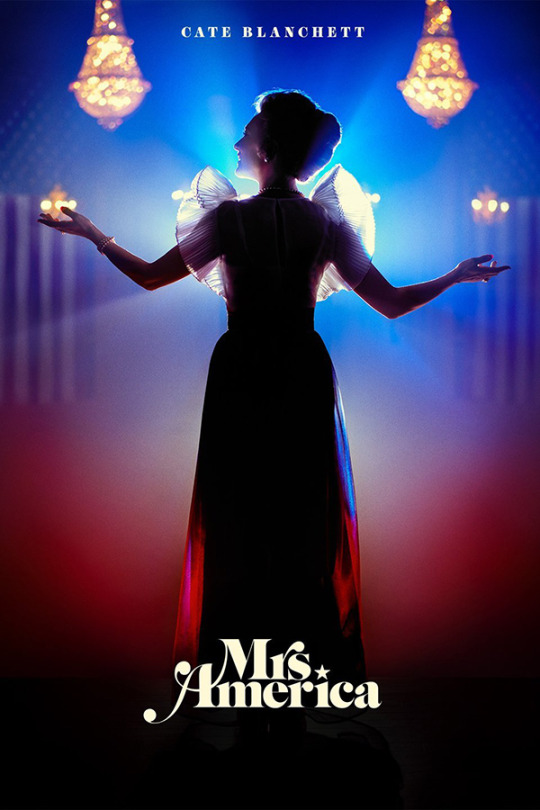
This FX miniseries explores the women’s liberation movement and fight for the Equal Rights Amendment in the 1970s and its opposition by conservative women including Phyllis Schlafly. One of the most ingenious aspects of the series is centering each episode on a different character, which rotates the point of view and helps things from getting same-y. With a slate of directors including Ryan Bowden and Anna Fleck (Half-Nelson, Sugar, Captain Marvel) and an A-List cast including Cate Blanchett, Rose Byrne, Uzo Aduba, Sarah Paulson, Margo Martindale, Tracey Ulman and Elizabeth Banks, its quality is right up there with anything on the big screen. And its message remains (sadly) relevant as ever in our current era.
1. The Good Place: Season 4 (NBC)
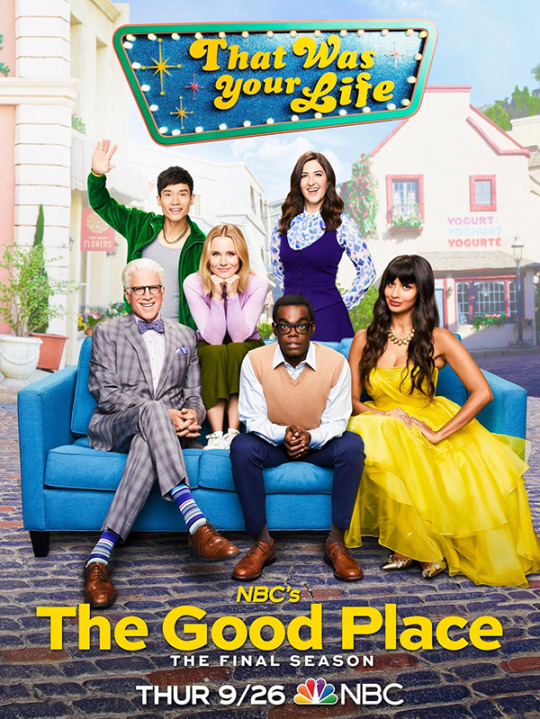
It was tempting to omit The Good Place this year or shunt it to a side category since only the final 4 episodes aired in 2020, but that would have been disingenuous. This show is one of my all-time favorites and it ended perfectly. The series finale is a representative mix of absurdist humor and tear-jerking emotion, built on themes of morality, self-improvement, community and humanity. (And this last run of eps also includes a pretty fantastic Timothy Olyphant/Justified quasi-crossover.) Now that the entire series is available to stream on Netflix (or purchase in a nice Blu-ray set), it’s a perfect time to revisit the Good Place, or check it out for the first time if you’ve never had the pleasure.
5 of the Best Things I Caught Up With
Anne With An E (Netflix/CBC)
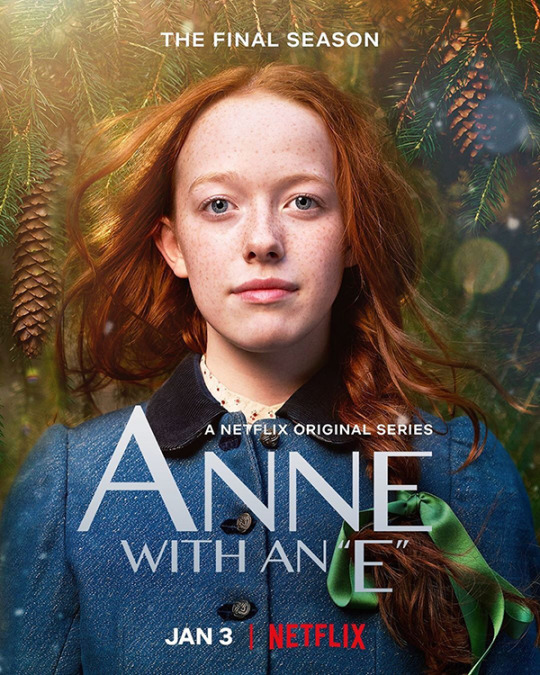
Another example of classic literature I had no prior knowledge of (see also Little Women and Emma), this Netflix/CBC adaptation of Anne of Green Gables was strongly recommended by several friends so I finally gave it a shot. While this is apparently slightly more grown-up than the source material, it’s not overly grimdark or self-serious but rather humane and heartfelt, expanding the story’s scope to include Black and First Nations peoples in early 1800s Canada, among other identities and themes. It has sadly been canceled, but the three seasons that exist are heart-warming and life-affirming storytelling. Fingers crossed that someday we’ll be gifted with a follow-up movie or two to tie up some of the dangling threads.
Better Call Saul (AMC)
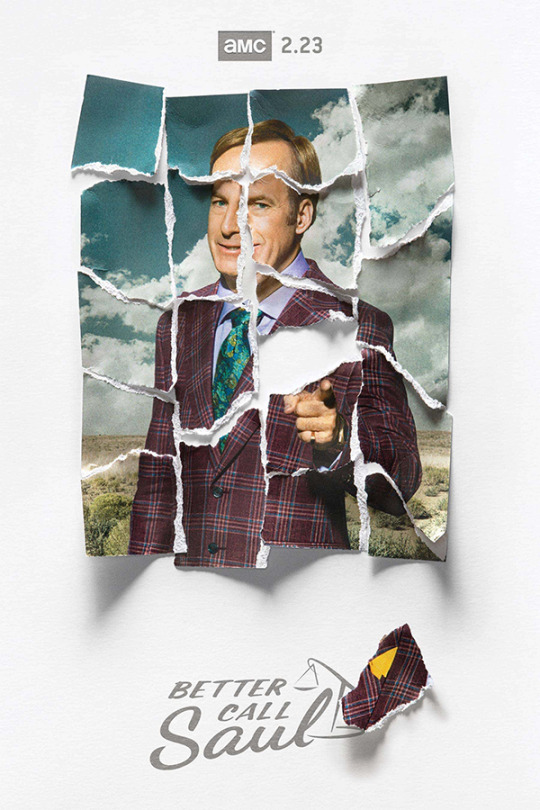
I liked Breaking Bad, but I didn’t have much interest in an extended “Breaking Bad Universe,” as much as I appreciate star Bob Odenkirk’s multitalents. Multiple recommendations and lockdown finally provided me the opportunity to catch up on this prequel series and I’m glad I did. Just as expertly plotted and acted as its predecessor, the series follows Jimmy McGill/Saul Goodman on his own journey to disrepute but really makes it hard not to root for his redemption (even as you know that’s not where this story ends).
Joe Pera Talks With You (Adult Swim)
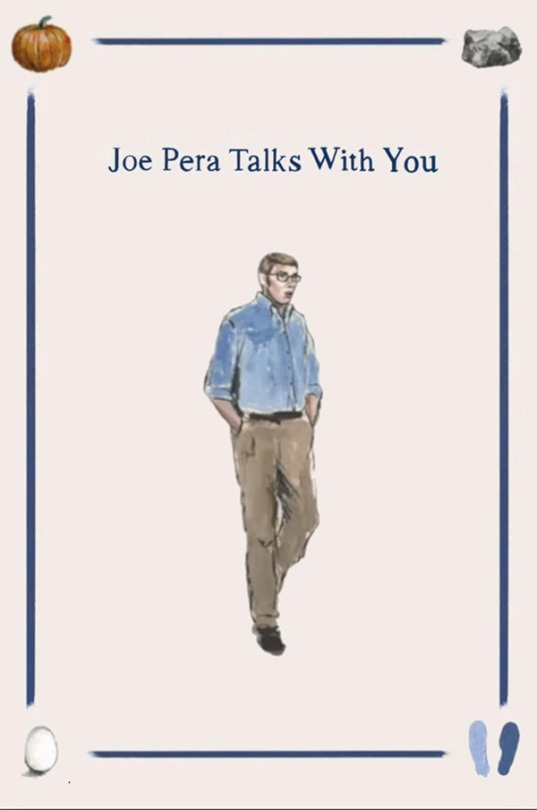
It’s hard to really describe the deadpan and oddly soothing humor of comedian Joe Pera whose persona, in the series at least, combines something like the earnestness of Mr. Rogers with the calm enthusiasm of Bob Ross. Sharing his knowledge on the likes of how to get the best bite out of your breakfast combo, growing a bean arch and this amazing song “Baba O’Reilly” by the Who – have you heard it?!? – Pera provides arch comfort that remains solidly on the side of sincerity. The surprise special he released during lockdown, “Relaxing Old Footage with Joe Pera,” was a true gift in the middle of a strange and isolated year.
The Mandalorian (Disney+)
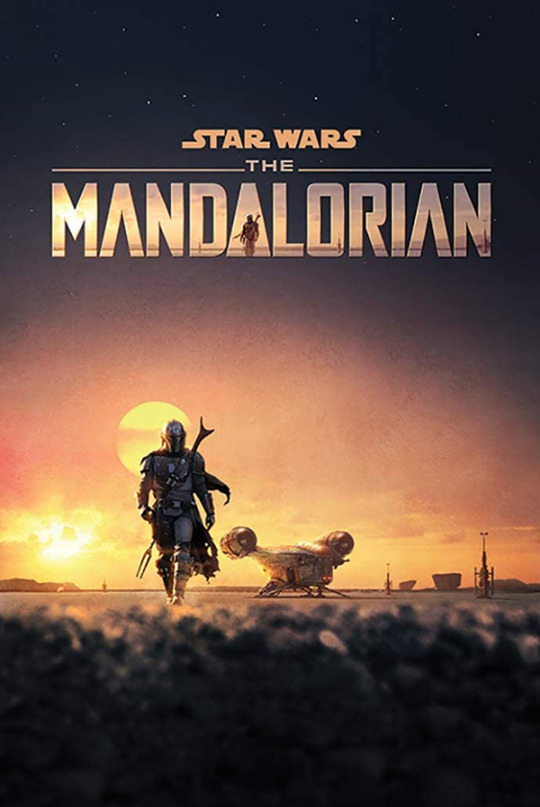
One of the few recent Star Wars properties that lives up to its potential, the adventures of Mando and Grogu is a real thrill-ride of a series with outstanding production values (you definitely want to check out the behind-the-scenes documentary series if you haven’t). I personally prefer the first season, appreciating its Western-influenced vibes and somewhat-more-siloed story. The back half of the second season veers a little too much into fan service and video game-y plotting IMHO but still has several excellent episodes on offer, especially the Timothy Olyphant-infused energy of premiere “The Marshall” and stunning cinematography of “The Jedi.” And, you know, Grogu.
The Tick (Amazon Prime)

I’ve been a fan of the Tick since the character’s Fox cartoon and indie comic book days and also loved the short-lived Patrick Warburton series from 2001. I was skeptical about this Amazon Prime reboot, especially upon seeing the pilot episode’s off-putting costumes. Finally gaining access to Prime this year, I decided to catch up and it gets quite good!, especially in Season 2. First, the costumes are upgraded; second, Peter Serafinowicz’s initially shaky characterization improves; and third, it begins to come into its own identity. The only real issue is yet another premature cancellation for the property, meaning Season 2’s tease of interdimensional alien Thrakkorzog will never be fulfilled. 😢
Bonus! 5 More Honorable Mentions:
City So Real (National Geographic)
The Good Lord Bird (Showtime)
How To with John Wilson: Season 1 (HBO)
Kidding: Season 2 (Showtime)
Unbreakable Kimmy Schmidt: Kimmy Vs The Reverend (Netflix)
11 notes
·
View notes
Text
Jingle Belle: A Very Special Jingle Belle Special or A goofy holiday comic and a long tired rant about the animation industry

Ho ho ho and merry Christmas as we reach the final stretch of Christmas reviews and it’s all Christmas all the time for the rest of the week for obvious reasons. So we’re starting off by wrapping up Jingle Belle for the season with one more comission. While it’s from my usual client, It’s via patreon as for 5 bucks a month you can get a review a month of your choice. But since that hasn’t taken hold just yet, and won’t till next month, he asked to swap it for this month and here we are. Not much to cover though this is the very comic where Jing hopped publishers from Oni Press to Dark Horse. The whys I genuinely do not know and at the time, I just know it’s weird to talk about Dark Horse these days. Their not dead nor entirely irrelvant, Resident Alien, which I really want to check out as it has a really engaging premise, is getting a tv show that I also want to check out as while i’m not sure if it’ll be good, it’s still Alan Tudyk playing an alien who can barely pass for human and it hilariously shows. Whenever that streams i’m not missing a second of that and we all know it. And Umbrella Academy, started during bigger days for the company, is one of netflix’s hottest shows and one of many shows on my to do list I haven’t gotten to because I procastinate like no one else and as taking an entire month to get to the newest loud house shows to the point another one popped up, it bites me in the ass a lot. Point is their not GONE in relevance.. but at the same time they’ve lost the huge tide of liscences they road in on. Except for the Joss Whedon stuff, Marvel’s pretty much taken EVERYTHING from them via various deals: Star Wars, Conan and now Alien. Their still standing and makes good art books and clearly given Resident Alien good content, they’ve lasted this long their not going anywhere, it’s just really weird to think about. I will however give them huge credit for giving out tons of comics in early quarantine, and being easily the most generous company next to marvel. I.e. one of the few that actually gave out full collections.
But yeah at the time this was probably a safe move as Dark Horse had a love of one shots and likely a larger budget. Hence why from here on out the stories are in living color, and have a slightly diffrent art style to boot. Granted the character would shift artists but now it’s got a clear more cartoony art style I like a lot better courtsey of Jose Garabaldi. So yeah with christmas on our heels, let’s ring a ding jing, it’s A Very Special Jingle Belle Special.
We won’t be covering the backup for this one though it is quite good, it’s just not what kev asked or paid for.
We open on a parade!

While batman foils the joker’s poisioning scheme, Santa rides on a float proudly and Jing is hanging out on the back grumpy. It’s a great introduction for new readers showing Santa being big and jolly and what you expect while Jing grumps in the back with a “Sheesh, Daddy”. That’s how you establish a character well in only a few panels. IT’s really great is what i’m saying. Some teens pop up but don’t belivie her about being Santa’s daughter and when going to a christmas shop to try and find figures of her, the owner claims he dosen’t.. and well violence insues. You’ve met jing right? Anyways Jing is understandably a wee bit absolutely livid the world dosen’t know about her. Her parents sure but her? Nope. And it’s easy to see why: She’s the daughter of the world’s most famous man.. but despite all the holiday lore and junk she’s just the part he likes to hide from people.. or that’s how it feels. While he ducks it, she even gives him a nice save fatty it’s clear that even if she brought it up to rile him a bit.. she does feel on some level like he likes to tuck her away and hide her because he’s ashamed and because she’s not perfect. Granted she does act out and stuff, but she’s still his kid and i’ts still gotta sting. Though she has the perfect idea to fix this: A christmas special. Santa suggests just doing good deeds but Jing is right: her idea is better. Mostly because, as cyncial as this is.. more people are going to pay attention to a good holiday special than a celebrity’s kid doing charity and for far longer. A good christmas special just sticks in the brain and sticks with you forever. It’s why Santa Claus is Coming to Town and A Charlie Brown Christmas have lasted decades or why my list of best chirstmas specials is pretty weighty. They just stick with you so while this can’t possibly end well.. her plan is actually a really good one this time.
So Jing takes her friends off the line to help her animate it, stop motion styles and they remind her of her LAST christmas special.
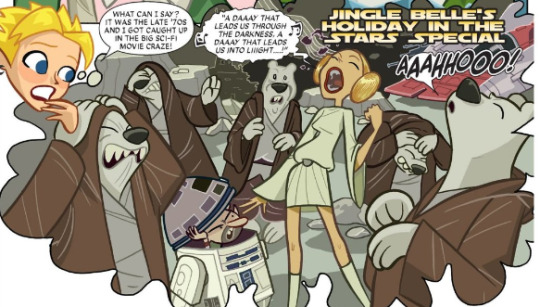
I mean I’m a sucker for any refrence to Star Wars Holiday Special. You’d think after several decades of jokes at it’s expense, with tons of youtubers, many of whom are dead to me but that’s besides the point, tackling the thing without it getting stale, that we’d eventually grow tired of mocking it but .. no. It’s a bottomless well of what they were thinking. The only question left is why isn’t it on Disney Plus.. I mean.. you made a second one as an affectionate parody and in lego. Kids are going to know about this now. Just put the thing up. Even edited down or just some clips. You put Rise of Skywalker up there, you’ve proven your threshold for shame when it comes to this franchise is vast. Just person up and do it. But Jing’s learned her lesson.. stop motion only and to follow the bouncing formula to sucess. So in the special which sadly isn’t all stop motion and is just drawn to resemble the specials, probably for the best but still, Jing and her animal pals are sneaking into a town where christmas was banned! Meeting the chirstmas legion of doom.. well okay that’s what i’m calling them. Burgermeister Budweiser! Bungle the Abominable Snow Monster! Frost Master and Heat BLister! The Frost Fakir.. wait the what?

........
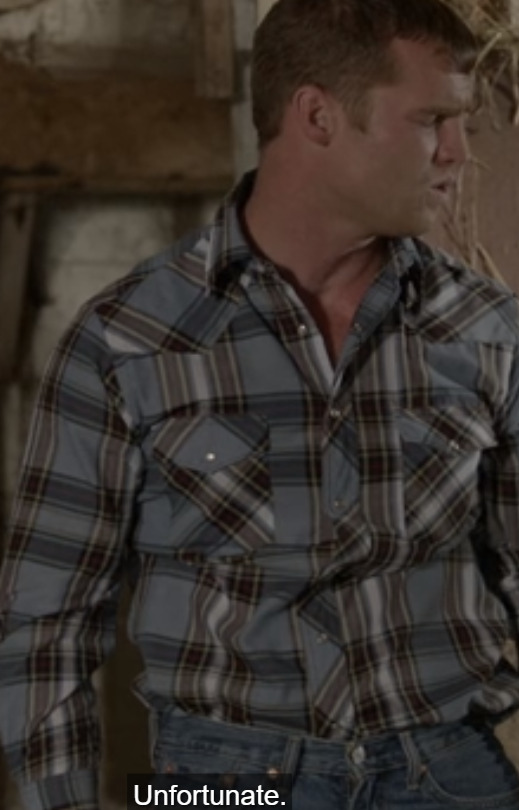
I mean where do I even begin? I know this was during the war on terror, I know that.. but still I expect better from Paul Dini for a crosses the line twice joke than “hey let’s just make bin laden into an ice wizard!”. I mean South Park made fun of him too, but they went all out with a looney tunes homage. Put effort in. And even years after he died the lonely island did this beautiful thing in the film pop star: never stop stoppin, which you should watch seriously watch it it’s underated.
youtube
Point is you can do better and if you don’t have room to do better then just.. don’t. You could’ve put in a t-rex in a top hat and monocle. That would’ve genuinely been better... because it’s better than everything ever btu that’s besides the point. There’s also one last addition to the rogue’s gallery thank god.
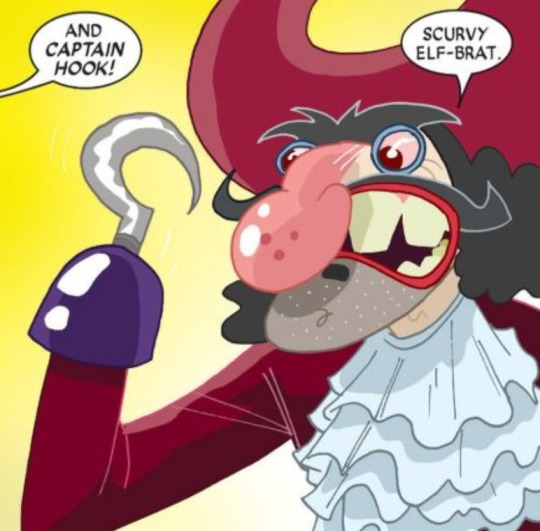
He hates her too. Now that gag is actually reallyf ucking funny. What’s also funny is how she solves things. By singing a nice and frinedly song about friendship to reform the villians.. or rather lure them over a bridge to get eaten by her orca friend.

So Jing after showing it to her dad heads to market it with him trying to warn her netoworks haven’t aired this kind of thing in years. But she faces the greatest threat to all of television: network executives, who keep offering advices and basically change the thing all together for stupid reasons and think cartoons should only be for kids despite it wokring in the past. Aka the hells animators STILL go through. I think Paul was projecting just a wee bit with this one. Given again IT HASN’T CHANGED since then, I can’t blame him. Seriously Harvey Beaks was canceled, among MANY ohter nick shows including rise of the tmnt just because it wasn’t an instant hit, Cartoon Network and warner keep trying to make dumbed down remakes of great shows, and Disney, among other networks, is fairly homophobic and while finally allowing some gay on the network this year had to be fought and outright refused it on ducktales for no adquate reason, caring more about monney and the bible belt than doing the right thing. So yeah as you can tell this bit got to me a bit and was hard to read because it. hasn’t. changed. 16 years and not a lot has changed other than more women are getting a chance. And granted the “kids are our only audiencce argument” isn’t as strong and several shows are powered by other demographics it’s still an issue and still the reason several good shows have gotten the boot and why the jeph loeb era of marvel animation was terrible. Because guys like him thought it should JUST be for kids and the lowest common demoninator of htem. You can be clever and be for kids dammit.

I apologize slightly for that it’s just something that’s been on my mind as shows dwindle and with ducktales gone the standard forbearaers for children’s animation are all pretty fresh faced. It’s just a lot to take in and i’ts been on my mind a lot.
Back to the actual story the result is a pretty purtrid cutesy special.. Jing reacts how you’d expect, destroying the tapes covertly with a herd of musk ox and destroying the tape. But they find the 70′s special and we end on that which is pretty funny. The only thing I really don’t like here is the ending. The rest of this special is really good: it’s clever , has some good satire and some really funny jokes especially that hook one. The ending just feels a bit weak.. like yes Jing wanted to be noticed but it’s not really an unsympathetic motive and while she does some shady stuff the villians still basically win by airing her terrible holiday special all over again. It’s just not satisfying. But yeah overall another pretty decent holiday comic with some good jokes. I”ll probably see Jing again next year, and it was fun getting to dip into these comics. THeir not my faviorites, but their still pretty decent and if the complete collection ends up on sale on comixology or you see it in a bookstore and you think it’d be up your ally i’d buy it. Again not my faviorite thing ever, but still enjoyable enough. Coming up this week of holiday cheer: ducks, more ducks, superheroes, and a best of list.
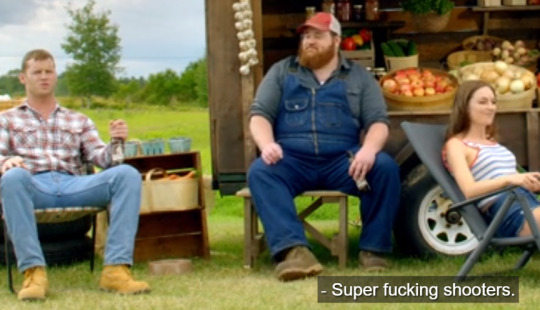
Until next time: Courage.
5 notes
·
View notes
Text
I just wanted to talk about Voltron Force in some way
You know what? I’m going to make a separate post for my actual opinions and “reasons to watch Voltron Force” BUT I’m not a good writer. I don’t know exactly how to articulate words well enough to really capture my opinion, but I can definitely throw in some research in that can give context and maybe some trivia for you to really appreciate the series.
I made this blog because I wanted to talk about weird quirky facts about the franchise because (to me, because I get hyperfixated on the stupidest shit) it’s actually quite interesting.
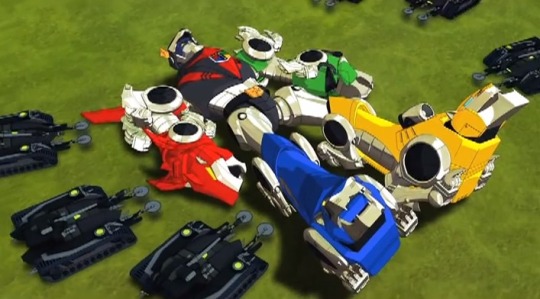
Before the show actually aired
So this all technically started way before 2011 when the series even aired. I can stretch this back to Voltron: The Third Dimension, but that’d be too much. I’ll start with the Devil’s Due comic which launched in 2003.
The Devil’s Due comics are significant. They are the first true reboot of the Defender of The Universe franchise, whereas Third Dimension (VTTD) before it served as a sequel to the 1984 show. The changes it did bring over evidently influenced future entries in the Voltron franchise.
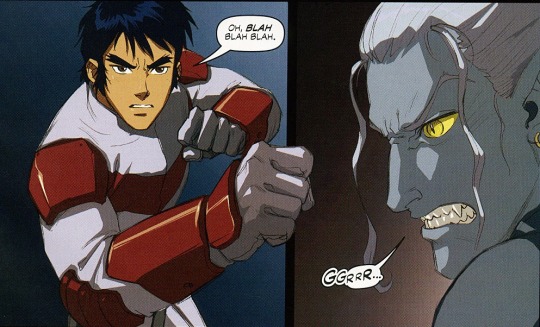
One thing to thank the Devil’s Due comics is cementing that Keith is definitely not white. In the comics he’s Japanese and Chinese mixed, and even adopting his surname from his original Golion counterpart, Kogane, albeit mispronounced constantly. The Dynamite comics that came after would retain this, whereas Voltron Force would make him more ambiguous and give him darker skin.
Like many things in Voltron: Devil’s Due would be cut short, with its third arc being rushed, and having its final chapters only published in a mass omnibus (which got many pages out of order grrr). Though before the omnibus’ release, WEP (the IP owners of Voltron) would partner up with animation company Kickstart Productions to work on a new Voltron series as early as 2005. Kickstart would provide an animation test based on the Devil’s Due comics.
youtube
Again, things get blurry from here in terms of how development actually rolled out. Between this time to when VF actually aired, Super Robot Wars W would have Golion make a debut in the game, where they clearly credit Toei as the copyright holder, and a year later there would be a legal dispute between WEP and Toei over the legal rights as the movie was in development (important). 2010 was when the rights were settled, and that marked just the right time to make a new show.

(From EJ Su’s DeviantART)
Kickstart was busy developing the series along with Classic Media’s help. The series was initially pitched as Panthera Force. Again, many characteristics of the Devil’s Due comics would leave their mark on VF, even having EJ Su, the main artist of the second volume of the comics (and his art still holds up really well to this day might I add), would help in developing concept art for the show.
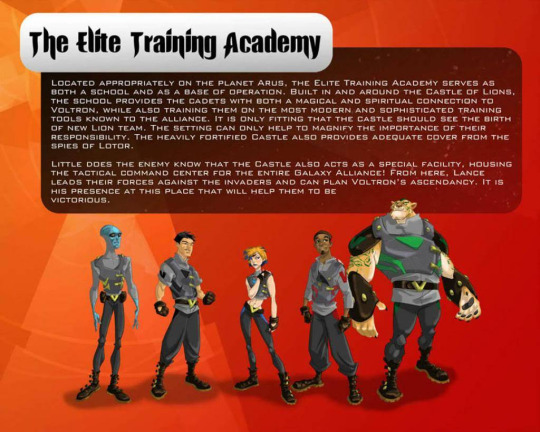
Panthera Force was initially pitched to center on new pilots being the main focus of the show, with the original crew being the mentors. Of course, as we all know they only kept three of the proposed five characters, Daniel, Vince, and Larmina. The two that didn’t make it were Imam and Bruno, a reformed Drule and an actual fucking lion respectively. Again, we can only make guesses as to why they scrapped the other two new characters, maybe it would be a chore juggling five old pilots, five new pilots, and the villains all together. Maybe they had a personal attachment towards the original cast or they’re worried about the current fanbase that loves them. I wouldn’t know, I don’t work for WEP or Kickstart.
Oh also… here is where Mattel comes in.
Spoilers: Voltron Force got cancelled
Okay so we all know the story: Voltron Force only had one season and it was cancelled. The official reason is that they simply did not have the budget to continue it as a show, and instead continued the series through its comics… which were intended to release alongside a season 2 of the show.
But I’m here to talk about why there was no funding. I think it’s incredibly easy to simply pin the blame on the fact that it had to do with few people liking it thus low ratings. And yes, that does make up part of it, but I believe that it’s actually more of a symptom than an actual cause.

So remember when I said that WEP and Toei had a legal dispute over the franchise right because of the movie being in production? While multiple companies had a bidding war over who would get the production rights to the movie, Mattel would partner up with WEP for the Voltron toy license in anticipation of the movie being made.
And yes I know a lot of you don’t care about the toys, but we have to realize the nature of the relationship with toy sales and show funding. It’s an unfortunate model that has resulted in the demise of many shows not making it because of lackluster toy sales. But here’s the thing: Voltron Force is a toy commercial for toys… that don’t exist…

Mattel would test the waters with the Voltron license by making toys of the classic robot in their Matty Collector line to mixed reception. We do know that they made prototypes of Voltron Force toys but they sadly never came to be, as Mattel cancelled their partnership with WEP seeing as the movie was never made. There is no point in keeping a license that isn’t making you money, and no movie definitely cemented that. What could have been major funding for the TV show was now lost.
Now as for the ratings; again it would be extremely easy to blame it all on people just not liking it, and yeah that may be a factor, but I think something worth pointing out is what channel it aired on: Nicktoons. From what I’ve been told, Nicktoons has a reputation in which cartoons move from the main channel to there as a way of “killing them”. Certain shows would see that cycle where they would be moved over to Nicktoons shortly before they’re cancelled.
Voltron Force had a lot going against it, and even the actual show does have its budget restraints very visible. Having budget cuts and low viewership continued rubbing salt in the wound. We have to remember that this was before Dreamworks came into the picture. It would just make sense to scrap everything before and work on something new now that a reputable animation company is in charge.
However, Voltron Force would continue through its Viz comic line. To reiterate, these comics were intended to release while a second season would air. But an actual continuation to show’s cliffhanger would be in the 30th Anniversary book.
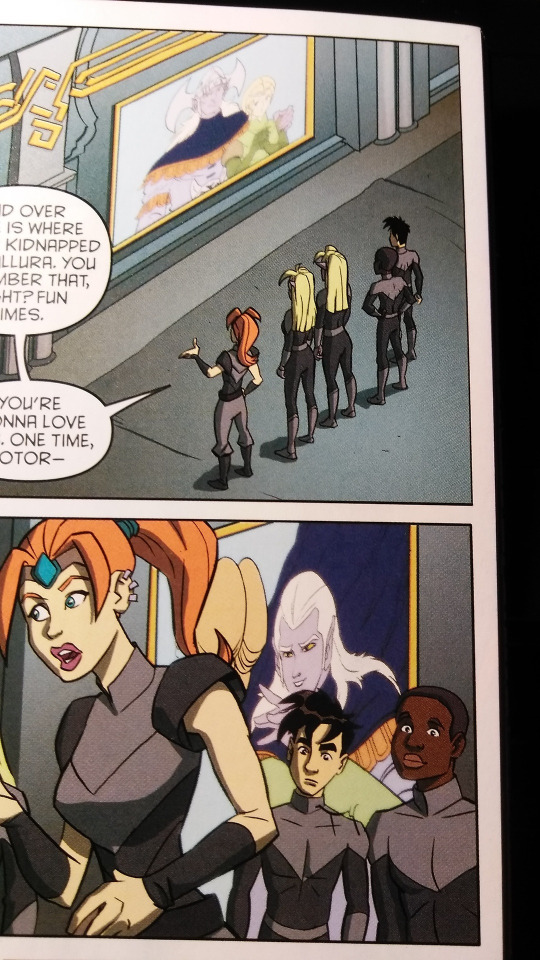
(for some reason the Voltron Force comics also keeps how the show inserts unfitting DOTU styled artwork in the background)
Final thoughts
There’s something very sad writing about this. Sure Voltron Force’s cancellation isn’t as scandalous as theorizing about what really happened with VLD’s production, but overall I can see that there was a lot of potential for what could have been. Of course there are a lot of things that aren’t executed in the best way, and the most visible is the art style which is the easiest to judge at a single glance.

But you really have to admire that there were people that really wanted to make a Voltron for the new generation, and we have to realize that many resources simply weren’t there for them to make that task easier. Sometimes I say that Voltron Force was simply made during a very difficult time, and as it went through an era of companies backing in and out on Voltron’s involvement, everything ironed out for VLD to come in to a bigger fanfare.
56 notes
·
View notes
Photo

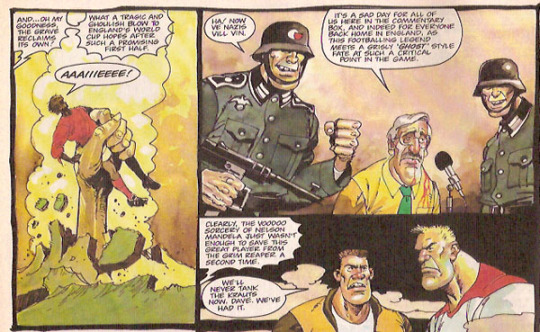

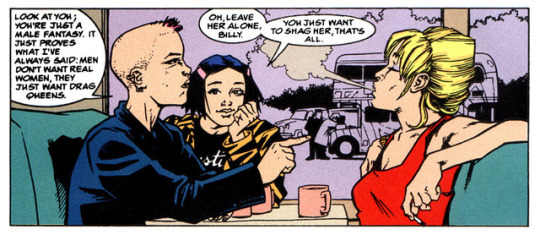
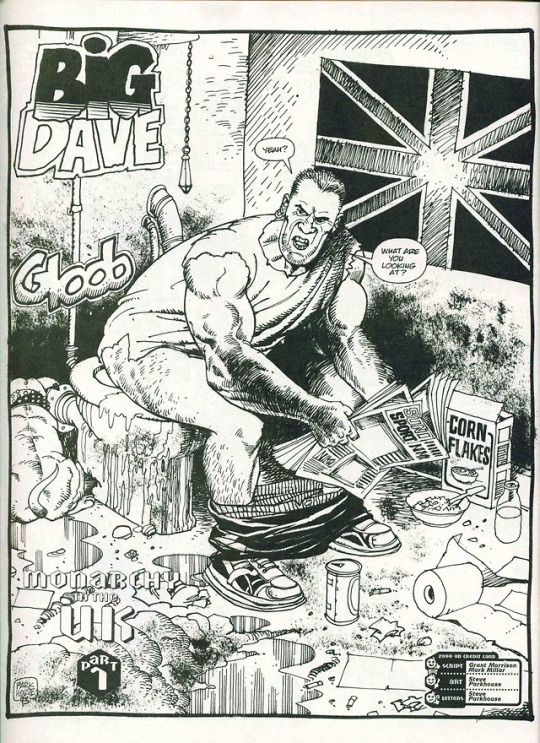
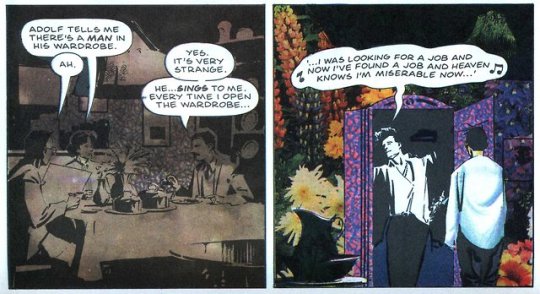

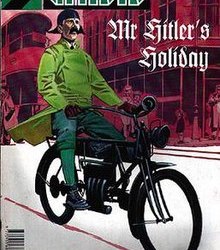
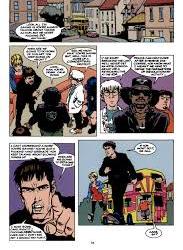
MONDO FUNNYBOOKS; HITLER, BREXIT THE COMIC ,WEIRD INDIAN GAY PORN AND SADDAM HUSSEIN ON AN OSTRICH!
There was a time where comic creators worked to cause up a stink. Keith Giffen shot a comic (We're still after one, please, Dave or anyone else who worked for Blackball.) Kevin Maguire made ALL of Steve Rogers embossed. Spawn shipped 2 issues out of order. Lobo punched God in the face. Kyle Rayner became a Green Lantern. Barry Windsor Smith said some of the early Image Comics were a bit rubbish while promoting his new book 'Storyteller'. Youngblood: Year One would feature fully painted art by Rob Liefeld, akin to just released hit 'Marvels', featuring painted art by Alex Ross. Tom DeFalco famously declared his new ongoing from Marvel, 'Sleepwalker', would be 'Sandman' done right.
Copies of Sleepwalker are usually found in cheap bins across the Western hemisphere so feel free to judge for yourself how successful he was with that.
But for our money, nobody stirred up trouble like Gregarious Grant Morrison. His interview alongside Mark Millar with Comics World to promote their upcoming mini-series 'Skrull Kill Krew' remains one of the funniest moments of 'What a load of old bollocks this is!' vindictiveness since John Buscema told everyone in his art class to swipe since 'this stuff ain't going in the Lourve, pal.' Some of the less informed American hype rags attempted to suggest that SKK was the natural sequel to Zenith since it would see Morrison reunite with his partner in crime: Steve Yeowell.
Which either means they didn't know, or thought it wiser not to mention a strip that ran in Crisis circa 1990 called 'New Adventures Of Hitler'.
We'll come back to Crisis in more depth because it's probably the answer to the question a lot of the UK retailers are asking at the moment: How do we get people reading comics again. Crisis or something like it would be a good attempt, featuring a ton of original strips in a format that didn't suggest it ought to be stocked amongst a bunch of plastic bags full of toys and a magazine. Crisis also featured two of our favourite stories: 'Dare' which finished off from the sadly cancelled Revolver (Again, more another time.) as created by Grant and Rian Hughes and 'Trip To Tulum'. Which oddly was the only way to find the English translation of the collaboration by Milo Manara and Federico Fellini for quite a long time. God knows how they even got that in the first place.
NAH featured in issues 46-49 and surprised a few newsagents opening their delivery at 5am across the UK when confronted with 'Mr Hitler's Holiday', featuring your man from The Third on a bike against a dirty lurid purple cover. NAH concerned itself with Adolf taking a trip to Liverpool from 1912-1913 and learning a few tricks about fascism from the English while reality warps itself silly around the wee lad. Morrisey shows up singing 'Heaven Knows i'm Miserable Now'. A bunch of randoms begin chanting 'Hitler Has Only Got One Ball' on a bus he's on leaving the future Fuhrer mystified and mortified.
'NAH' originally ran in something called 'Cut' magazine but one of the editors, also someone from a band called 'Hue & Cry' having a strop so either 'Cut' itself stopped or at least stopped running the story. In any event, it migrated over to Crisis. It's rather excellent and while we don't know who owns the rights to it, it's one of those things that really ought to be in print.
Speaking of which......
Those more in the know will have to explain it to us, because the common answer is 'Because Grant and Mark aren't friends anymore.' and we're not sure that's how book publishing works, but the question is obviously 'Why isn't Big Dave in print?' If ANY comic were a timely insight into the mindset of the Brexit voting population of the UK, 'Big Dave' prophetically nails it like a time bullet fired from 1993. Essentially a high budget Viz strip beautifully pencilled by Steve Parkhouse, BD is a series of increasing ludricious adventures featuring that wide necked bloke in an England shirt with a bulldog tattooed to his forehead you see every St George's Day with a copy of The Sun in his back packet. It is ludicriously sexist, homophobic, racist and pro-monarchy.
Or at least the character is. Quite a few people seemed to confuse 'the portrayal of an attitude' with 'the glorfication of same attitude'. 2000AD apparently getting a bit narky if you bring this not being in print up. Frankly, if you don't find Dave having a threesome with Princess Di and Sarah Ferguson funny, you're probably reading the wrong column. We'd like to see this back in print. And please, please do not feel compelled to update this strip the same way 'DR & Quinch' was earlier this year. We'll stick that little relaunch in the same bin as the 'Femme Fatales/What if our artists swiped from Loaded and stuck some 2000AD related costumes on the art.' supplement from 1994, aye?
Finally, we go from the unreprintable to the never even published and perhaps not even written!
Unless somebody does something incredible, we will probably go to our graves saying that 'Kill Your Boyfriend' by Morrison & Bond is the best single story in comics ever published. This, before old men start getting heart attacks, does not include long form series, mini-series, single graphic novels, cartoon strips, etc. In terms of a story that starts, continues and ends in one issue with no knowledge of any other comic ever published, KYB is it. It brings up and destroys the notion of the personality as anything other than a series of reactions to various traumas and conditioning far faster than 'The Dice Man' does and with much funnier results. It could be read as the documentation of how a good acid trip will crack the inner monologue of the ego and set your inner self free, if you were of such a mind. It's certainly one of the best things Vertigo ever did.
'KYB' was part of a line called 'Vertigo Voices' published in 1995. The other books were 'Faces' by Pete 'Shade' The Changing Man'* Milligan and Duncan 'Oh, all the good things' Fegredo a book about why is plastic surgery and what does it say about us that we've conditioned ourselves to believe that there is such a thing as an imperfect face. Also 'Tainted' by Delano and Davidson (we've not read it, but the line up is well sound) and another book that we'll come back to in a bit but what's relevant here is that there was meant to be another comic in this line.
That comic would have been 'Bizarre Boys' by Grant Morrison, Pete Milligan and Jamie Hewlett.
The legend is that a suitably refreshed Grant and Pete were out in India and were looking around at various stalls filled with magazines, amidst the chaos the publication 'Bizarre Boys' caught their eye and was so outlandish (we're not Googling it, but nor are we stopping you from doing so.) that they committed right there to sell a comic with the same title to Vertigo. It got as far as being previewed in Spin Nov 1994 along with talk of an Invisibles TV Show (and come on. PLEASE. Netflix has cleared the deck of all the boring Marvel Superhero things so now is the PERFECT time for the adventures of Lord Fanny And The Other Ones.) but somewhere along the line it simply dropped from the publication schedule with no word of why, although as the comic was to be a fictional biography of Milligan and Morrison's alter egos, it's suggested that they were too busy living the life to settle down long enough to document.
We'd have to make the point that an oral account of the Vertigo offices circa 1994-1996 as spoken by Pete and Grant while drawn by Jamie would be a far more interesting thing to bring us back to the shops for new comics than, well, Tank Girl or Green Lantern.
The following pitch ran as part of The Time Is Now: DC Comics' Editorial Presentation 1994.
'Here's the solicitation copy for Bizarre Boys, which ran as part of The VERTIGO does what it does best in VERTIGO VOICES - a new umbrella title for four distinctive one-shots - where four of VERTIGO's most creatively deranged writers give voice to their most outrageous, gripping and graphic imaginings. Each "VOICE" delivers its own sound, in turn hyperreal, darkly disturbing, irreverent, and biting. FACE is the first "VOICE" to be heard, followed by KILL YOUR BOYFRIEND, and closing with BIZARRE BOYS. These are stories with sounds all their own, tearing a jagged rip through reality.
BIZARRE BOYS, VERTIGO VOICES' most irreverent title, is a story within a story within a story. It's about some fictional characters called the Bizarre Boys, and about the writers who write them and about the writers who are writing about the writers... There are two voices telling the tale of BIZARRE BOYS, and they don't agree with each other at all.
BIZARRE BOYS is a comic about a comic and about the process of putting together a comic. It's a sparkling tapestry of post-modernism and a fast- moving breathless chase across time and space.
It all takes place - naturally - on Bizarre Boys Day, when writers Peter Milligan (SHADE, THE CHANGING MAN) and Grant Morrison (THE INVISIBLES) join forces with artist Jamie Hewlett (SHADE, THE CHANGING MAN, Tank Girl) to tell the tale of two writers called Millison and Morrigan, and their fabulous creations, The Bizarre Boys. Echoing James Joyce's Bloomsday, whatever events happen on Bizarre Boys Day also happen in the comic.
As the two writers begin their quest for the fantastic Bizarre Boys, whose sweat contains miraculous healing and hallucinogenic properties, these latter-day Brothers Grimm weave some dissolute modern fairy tales, take the wraps off the creative process itself, and tell a joke or three.'
We're told by inside sources that elements of 'Bizarre Boys' ran in the final book of The Vertigo Voices line: 'The Eaters' as drawn by Dean Ormston and Pete Milligan.
And that's us for now. What do YOU think? Should these projects remain in the dustbin of FunnyBook History? Maybe Kickstarters, er, started to try and release them as independent books (Lord knows if Cyberfrog can be a thing again, then...) Amazon have begun publishing comics directly from creators like Kyle Baker and Rick Veitch, which could sidestep the whole 'Comics are for kids so why is this in Sainsbury's!?' furor all over again. Image has put out some fairly anondyne nonsense lately and could do with something like this in their line-up. Let us know in the comments and as ever we'll see you in The FunnyPages.
(Big Dave ran as part of 2000AD's 'Summer Offensive' in 1993, some of the most fun the Progs have ever been. Big Dave features in the following issues*:)
"Target Baghdad" (with Steve Parkhouse, in 2000 AD #842–845, 1993) "Monarchy in the UK" (with Steve Parkhouse, in 2000 AD #846–849, 1993) "Young Dave" (with Steve Parkhouse, in 2000AD Yearbook 1994, 1993) "Costa del Chaos" (with Anthony Williams, in 2000 AD #869–872, 1994) "Wotta Lotta Balls" (with Steve Parkhouse, in 2000 AD #904–907, 1994)
*according to Wiki, anyway.
'New Adventures Of Hitler' can be found in Crisis: #46 - 49.
#Grant Morrison#Mark Millar#2000AD#New Adventures Of Hitler#Crisis#Skrull Kill Krew#Zenith#Vertigo#Steve Parkhouse#Phillip Bond#Steve Yeowell#DC#Jamie Hewlett
10 notes
·
View notes
Text
An Ode To Conan (AKA Conan Ode’Brien)
The year was 1995... or maybe '94... or at least sometime around then, give or take a year. I had just entered, or would be entering middle school, at age eleven... or twelve. With a new school came a later bedtime. So around that time I discovered two things: Saturday Night Live, and Late Night with Conan O'Brien. That was when my world changed.
For as long as I can remember, I've been a silly kid. My parents even used to throw an extra letter in my name and call me “Jokey.” Occasionally, they still do. But now, looking back, nearly 25 years later, I don't know if I'd have ever predicted just how much of my joking nature I'd be able to maintain at this point in my life. Today, at 37, if you ask me to sum up my personality in two words, they'd be “weird” and “funny.” As most age, they lose those traits. They'd instead define themselves as a “Personal Trainer” or a “Civil Engineer.” But I'm still just “weird” and “funny” - a goofball rebelling against the notion of “growing up.” I stubbornly keep the letter 'y' on the end of my name when most Josephs my age pick a more mature alternative. I have little interest in being anything else, and aspire for nothing more.
Much of that is thanks to a tall, freckled, red-headed idol I found on the late night airwaves of NBC, who danced as if he had strings on his hips and let people touch his nipple. I grew up watching cartoons like Teenage Mutant Ninja Turtles, Disney movies with comedic voice actors, and blockbuster movies like Ghostbusters and Mrs. Doubtfire, but I'd never seen anything as wildly experimental as Late Night. The (arguably) grown man at the helm still retained such a whimsical, silly, absurd outlook on life. He was a big kid, just having fun. It blew my mind. I was hooked. And it showed me that even if I was weird, I wasn't alone.
The absurdity of Conan and Late Night continues to be unrivaled, even to this day. There was a Masturbating Bear, who just went to town on this oddly nondescript jock strappy looking thing, Preparation H Raymond, an overly goofy looking character, with buck teeth and massive ears, who sang songs about applying a cream to irritated buttholes, and Triumph The Insult Comic Dog, who eviscerated Star Wars nerds and crashed the Westminster Dog Show. Clutch Cargo bits, where moving mouths were inserted into pictures of Arnold Schwarzenegger, Michael Jackson, and Bill Clinton, always brought the laughs in the early days, with both Robert Smigel's impressions and the disregard for making things look authentic. The In The Year 2000/3000 bits provided the rapid fire jokes of randomness that I aspire to write today, one of my favorites being: “Babies will start listening to dance music when Lady Gaga teams up with The Goo Goo Dolls to form the super group, Gaga Goo Goo.” Other recurring bits like Celebrity Survey, SAT Analogies, and Made-For-TV Movie Castings provided similar repeatable formats that brought laughs night after night, as did Actual Items, a swipe at Leno's Headline's bit. If They Mated provided us with the horrors of what the love child of two celebrities would look like, in worst case scenarios. Desk driving bits and car chase spoofs with model towns and cars always delivered. There were the silly Satellite TV Channel bits, with the standout, the Men Without Hats Conversation Channel, as well as the truly pointless – yet my all-time favorite character – Cactus Chef Playing ‘We Didn’t Start the Fire’ on the Flute, created solely to poke fun at the criticism that the show was absurd. Conan Sings A Lullaby was always some macabre fun. At one point, The Walker Texas Ranger lever swept the nation, ultimately resulting in one of the oddest clips ever to grace television. “...Walker told me I have AIDS.” Constant cameos delighted, with frequent appearances from Larry King and Abe Vigoda, who were both always willing to go the extra mile for a laugh. And occasionally, my beloved comedy worlds would combine with someone from SNL like Will Ferrell showing up, dressed as a sexy leprechaun, or engaging in some other antics. Jim Gaffigan birthed the Pale Force cartoon. Hornymanatee.com became a thing. Remote bits, like Conan playing old timey baseball, were always instant classics. Plus, the show birthed the idea of travel shows, with trips to places like Finland and Toronto - the second of which has one of my other favorite remote bits, Conan training with the Toronto Maple Leafs. So much memorable, silly, recklessly avant-garde stuff happened in those years of Late Night. And all the best moments happened when Conan acknowledged the astronomical stupidity of it all. It was always a pleasure to watch, and it all felt expertly crafted just for me.
In the end, a program that got off to a rocky start, fighting off cancellation time and time again, blossomed over the course of fifteen years into a comedy juggernaut and bastion of brilliant buffoonery for my generation. It was practically perfection.
Then the first transition happened...
Like many, I was apprehensive about the switch to The Tonight Show. It was great to see Conan inherit what was formerly known as the pinnacle of late night talk shows, but I wondered if America was ready to watch a bear play with his dick at 11:30pm, especially the demographic that had enjoyed Leno's far more traditional approach. I think we now have that answer. NBC managed to repeat their past mistakes, and fumbled another smooth transition of hosts. Things got kind of ugly, but Conan managed to land on his feet at TBS, where his show continued to run for another eleven years, giving him and his employees - who had relocated to Los Angeles at the start of The Tonight Show - steady work.
The one issue with the migration was that Conan no longer retained the rights to any of his intellectual property. Exceptions were made, but most of this bits and characters were absent from the now titled show, Conan. There was also one less show a week. However, new bits were concocted regularly, like Coffee Table Books That Didn't Sell, Basic Cable Name That Tune, and NBA Mascots That Should Never Dunk. New characters were spawned, like Minty, the Candy Cane That Briefly Fell on the Ground, Punxsutawney Dr. Phil - The best Dr. Phil bit since Letterman’s Words of Wisdom - and Wikibear. Will Forte showed up atop a stuffed buffalo as network owner, Ted Turner. Experimental stand-up sets, like Tig Notaro pushing a stool around or Jon Dore & Rory Scovel being double booked provided some of the best stand-up sets ever. Embracing a digital, web-based format, they introduced new segments like Clueless Gamer, catering to my love of video games. There was Puppy Conan, and Mini Conan. Plus, they doubled down on travel shows, creating the Conan Without Borders series, which I believe to be Conan's best work to date, and a shining example of who he is as a person. There were Fan Corrections, which allowed me to influence his show for five minutes, and throw my own zaniness into the world, and back at the man who stoked the funny fire in me. At some point in life, I may achieve greater things, or have children, but I may still always say that the greatest day of my life was the day I was on Conan.
So Conan did have bright spots, but to me things were never quite the same. They were still good, but not amazing. Slowly it felt like things were beginning to decline. Longtime writer/performer Brian McCann left to return to New York. A while later, so did Brian Stack, finding a job with Colbert. The show was eventually cut to a thirty minute format. They spun it like it was a good change for the show. I however had my reservations. While I'd hoped for more experimental comedy, it seemed like the first half of the show was cut in favor of still getting in sizeable celebrity interviews. The band was gone, as were the options for nightly music acts. That meant no more fantastic moments like me discovering Lukas Graham with his subdued “7 Years” performance. Stand-up was pretty much gone too, which meant no more killer sets like Gary Gulman's bit on state abbreviations or Ismo's foreign take on the use of the word “ass” in English linguistics. Occasional product placement reared its ugly head. They had to keep the lights on, and they found a way to. So I continued to watch practically every show over the course of the eleven years.
When the pandemic hit, I found myself with more free time. So I decided to check out the Team Coco podcasts, cherry picking from the best guests of Conan O'Brien Needs A Friend, The Three Questions with Andy Richter, and Inside CONAN: An Important Hollywood Podcast. Never having paid attention to any podcasts, I found a love for them. And sometime amidst the pandemic, watching Conan interview some random celebrity, from some show I probably didn't care about, through Zoom, I kind of became at peace with the idea of a nightly Conan program ending.
From middle school, to high school, and then to college, I tuned in when I could. Without the luxury of the internet in its currently glory, or DVRs, I'd tape episodes on a VCR. Barring two or three episode of Conan that I missed while working two jobs, I've seen every episode of Conan, every Tonight Show, and a good streak leading into the end of Late Night. But I will admit that towards the end, it has sometimes felt like a chore.
One thing I didn't drag my feet on was attending tapings. It was one of the first things I did when I came to LA. Over the past few years I was fortunate to get to attend three tapings of Conan. In hindsight, I probably would have went more often. I brought family and friends along with me when they visited, but the treat was primarily for me. When he announced that the final few weeks of shows might have an audience, I knew I must go. I put in for two tapings, and fortunately the stars aligned for the third to last show with Seth Rogen. I was hoping for Ferrell, or Sandler, but it was great! It was the first show where masks were optional and it went recklessly off the rails. Like Conan, I've never been into pot. It's another of the things I enjoy about him. Like him, I don't really have a problem with it, but I've never tried it because I don't think it's for me. I’m the same way with alcohol. With a friend in town this week, I tried one of the beers he bought. I hated it, but I struggled through it. I’ll occasionally drink some fruity wine cooler but that’s about it. So seeing him reluctantly try the joint Seth handed him because he didn't care since the show was wrapping was great. Unseen in the TV edit was that after that segment, Conan and his producer, Jeff Ross, had a lengthy discussion as the band played. As the band wrapped up, Conan came back up and said to expect a rough edit on the show since they wouldn't be able to air them smoking. Turns out they could, which made for good TV. It was a symbolic moment where a man who's spend his entire career blazing his own trail – no pun intended - did so once more, knowing he had nothing to lose. I also put in a ticket request for the last show on the morning of because registration reopened for some reason, but I never got a confirmation. I'm excited to watch it tonight, but also sad to see things come to and end. But at least I can say I was there in the end.
For 28 years Conan and cast have delivered the show they wanted to make. Contrastingly, compared to the other late night shows, its always been far more apolitical, which I appreciate. Comedy to me is about dissociation. It's why I favor and write left-brained jokes about random subjects. No one really needs to hear another hackneyed Trump or Biden joke. Regardless of the state of the world, I could tune in to Conan for a mostly unbiased, silly outlook on the world. Conan always seemed to bring out the best in the guests too, making his show the premier show to tune into when someone was out in the circuit promoting something. Even the stereotypical animal segments or cooking segments provided ample laughs.
Most of the talk will be about Conan himself. But a very large part of what has always made Conan's shows great wasn't even him. A large cast of stellar writers and performers brought countless characters to life. Brian McCann and Brian Stack were longtime favorites. There was the No-Reason-To-Live Guy with his kayak, Hannigan the Traveling Salesman, Artie Kendall the Singing Ghost, and The Interrupter, to name just a few. Even people who had no business performing were utilized brilliantly, like original announcer Joel Godard or Max Weinberg both acting like creeps and perverts, trombone player Richie "LaBamba" Rosenberg being a dolt, and graphic designer Pierre Bernard in his deadpan Recliner of Rage segments. Jordan Schlansky was a comedy well. Andy Richter also deserves more praise. His quick wit makes him the perfect sidekick. I can't even begin to enumerate the amount of instance in which he was lightning fast with a witty response to someone or something. His more recent Sports Blast segments were absurdly stupid, and his Hillbilly Handfishing remote stands out as one of the best.
The late night talk show concept is built around volume. With 4368 episodes among three iterations of shows, there's a lot of time to fill. Things didn't always work, but most of the time they did. That's what you get when you experiment and evolve the medium. I've been thinking a lot about my history with the show, and it's amazing just how many silly bits, characters, and moments still bounce around in my noggin. I've only covered a small sample of the many great moments over the years. It's always seemed really weird to me that Conan has kind of been the underdog. To me, no one holds a candle to his brilliance. I can only liken attending his tapings to a few other experiences: the time I finally got to see Michael Jordan play as a Wizard, or Rush's final R40 tour – three great entities who may not have been at the height of their careers, but were still massively impressive none the less. Conan concluding tonight is very bittersweet. The future is uncertain. The details for his HBO Max show are nebulous. It's going to be far more small scale. I've always admired how much Conan has taken care of his cast and crew. He paid his writers during the strike, and his entire crew during the pandemic. But they will certainly fracture now. Will any of the writing staff follow? Will longtime performer Dan Cronin be there? Will Andy be back? Time will tell, but until then, television, the internet, and the world of comedy, will be a little less funny. In many ways, I wish we lived in a world we he still hosted Late Night, or a successful Tonight Show. But the late night landscape has changed a lot in the last few decades, so who’s to say this wasn’t the better timeline. If there’s one thing I cling on to that keeps me hopeful about the future, it’s Conan’s closing monologue from Late Night. Especially its ending: "It's time for Conan to grow up... and I assure you that's just not going to happen. I can't. This is who I am, for better or worse. It's just, I don't know how."
That hits me just as hard as it did in ‘09, if not harder. The more things change, the more they stay the same. The guy that started hosting in ‘93 is the same guy we see today. He’s still just as childish, just as absurd, just as brilliant, and a man of integrity. And as long as he is, so too will I be.
0 notes
Photo
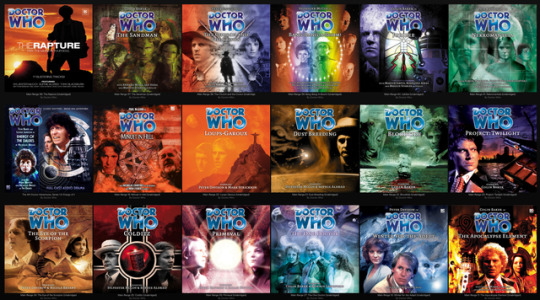
Big Finish Doctor Who on Spotify as of May 2017
In a fit of fancrastination, I’ve compiled for you a linked masterlist of ALL FREE DOCTOR WHO AUDIOS on Spotify with quick notes to help you choose. You’ll need to register a login but can then start listening immediately.
Summary: Main Range 1-50, Lost Stories Season 1, Fourth Doctor S1, Eighth Doctor S1, UNIT: Dominion (essentially Seventh Doctor Adventures S1), Short Trips Vol. 1-2, Companion Chronicles S2, Destiny of the Doctor 50th anniversary anthology, stageplay adaptations, Dalek Empire S1-2, Jago & Litefoot S1-5, Benny S2-5, Iris 2-4, I, Davros, Graceless S1-3, Cyberman
Main Range are 4x25 minute episodes with cliiffhangers; the rest are usually an hour, apart from Short Trips which are 8x15-minute short stories.
Here’s the whole shebang:
Main Range 1-50 [Complete Playlist]
Full cast audio plays which try as closely as possible to capture the style/feel of classic who TV serials, with better writing and a bit more character development. Most Main Range are standalone. Those with arcs I’ve starred (Eight & Charley audios all follow a loose character development arc; * are the ones with essential beats for Charley’s Bigass Plot. “Project: [X]” ** audios are a multi-Doctor arc.) Bold are audios I rated 8/10 or above on my vhswhovian reviews blog.
Sirens of Time - Five, Six, Seven (A bit meh; BF finding their feet)
Phantasmagoria - Fifth Doctor and Turlough (fun but basic historical)
Whispers of Terror - Six, Peri (adequate, guest star Lisa Bowerman)
Land of the Dead - Fifth Doctor and Nyssa (some good bits, some bad)
The Fearmonger - Seventh Doctor, Ace (excellent but dark)
The Marian Conspiracy - Sixth Doctor, Evelyn (Evelyn’s intro, historical)
The Genocide Machine - Seventh Doctor, Ace (fine, but BF can be better)
Red Dawn - Fifth Doctor, Peri (adequate; guest star: Georgia Moffat!)
The Spectre of Lanyon Moor - Six, Evelyn, BRIGADIER (quite good)
Winter for the Adept - Fifth Doctor, Nyssa (so-so; guest star: India Fisher)
The Apocalypse Element - Six, Evelyn, ROMANA (Action! Gallifrey! RTD later referenced this story as an opening salvo of the Time War)
The Fires of Vulcan - Seventh Doctor, Mel (Decent historical, Pompeii)
The Shadow of the Scourge - Seven, Ace, Benny (I liked, but it’s grade B SF / comic book camp)
The Holy Terror - Sixth Doctor, Frobisher (fan favorite, terrifying crackfic)
The Mutant Phase - Fifth Doctor, Nyssa (draggy plot, good 5&N character moments)
Storm Warning* - Eight, Charley (A modest beginning but required listening for Charley’s arc; Gust star Gareth Thomas (Blake of Blake’s 7)!
Sword of Orion - Eight, Charley (Basic Classic Who SF; I enjoyed it)
Stones of Venice - Eight, Charley (Melodramatic retro-future Venice)
Minuet in Hell - Eight, Charley, Brigadier (a trainwreck, one of BF’s few misfires; someone needs to extract the Brigadier Writes Scathing Email To His Superiors scenes from the wreckage.)
Loups-Garoux - Fifth Doctor, Turlough (Melodramatic werewolves)
Dust Breeding - Seventh Doctor, Ace, and a very special guest star (spoilers sweetie) - two, actually, there’s Caroline John (aka Liz Shaw). I was a bit down on this when I rated it, but it’s grown on me.
Bloodtide - Sixth Doctor, Evelyn (Good but unexceptional historical made better by this team)
Project: Twilight** - Six, Evelyn (Powerful but very dark.)
The Eye of the Scorpion - Fifth Doctor, Peri, Erimem’s intro! (Rollicking adventure.)
Colditz- Seventh Doctor, Ace, Klein’s intro (guest star David Tennant. Ace in a WWII Nazi prison. Memorable and a bit of a turning point for her.)
Primeval - Fifth Doctor, Nyssa (FINALLY a good story for them; guest star Steven Grief (Travis in Blake’s 7. I’m biased but it’s a fave.)
The One Doctor - Sixth Doctor, Mel (A fond spoof of classic Who.)
Invaders from Mars - Eight, Charley (Riff on War of the Worlds Orson Welles broadcast; I don’t like the stereotypical sleazy gay villain)
The Chimes at Midnight* (Eight, Charley) This Christmas horror story and Spare Parts were voted the top two Big Finish audios ever.
Seasons of Fear* (Eight, Charley) I love this one; each part lets them tackle the same problem in a different historical era.
Embrace the Darkness (Eight, Charley) Good SF horror. I like it, but it’s not quite as excellent/essential as its two predecessors for the arc.
The Time of the Daleks* (Eight, Charley) Not my favorite Dalek story, but there’s some important beats for their arc you probably shouldn’t skip.
Neverland* (Eight, Charley, Romana) Payoff/crisis point for Eight and Charley’s arc. Essential listening. I suspect this one influenced Gatiss and RTD in how the new series envisioned Gallifrey.
Spare Parts* (Fifth Doctor, Nyssa) Guest star Sally Knyvette (Blake’s 7). One of the top two rated Big Finishes ever, basically Genesis of the Cybermen. IF YOU LISTEN TO ONLY ONE... But it’s dark.
...Ish. (Sixth Doctor, Peri) I adore this one, but it’s a little esoteric.
The Rapture (Seventh Doctor, Ace) Bleah. Seven takes Ace to a rave; Ace sulks. Cover art and techno remix of Who theme are best part.
The Sandman (Sixth Doctor, Evelyn) Good worldbuilding-SF adventure.
The Church and the Crown (Six, Peri, Erimen) Good historical.
Bang-Bang-a-Boom! (Seventh Doctor, Mel) Spoof of classic Star Trek. Amusing in spots, but it’s no Galaxy Quest.
Jubilee (Sixth Doctor, Evelyn) RTD liked this one so much he asked Rob Shearman to rewrite/adapt it to help kickstart nu Who. Dalek was the result. Very different, but you can see how the story germ (and one of the best scenes) are the same.
Nekromantia (Five, Peri, Erimem) Listen at your own risk; only one I’ve skipped on friends’ recommendations; includes gratuitous sexual assault on companion without dealing with the fallout from it.
The Dark Flame (Seven, Ace, Benny) Disappointingly meh horror.
Doctor Who and the Pirates (Sixth Doctor, Evelyn) - fan favorite, Gilbert & Sullivan meet Pirates of the Caribbean, “Gallifreyan Buccaneer” song.
Creatures of Beauty - (Fifth Doctor, Nyssa) Daring experiment in storytelling, dark, but excellent. Be prepared to be confused for a while; it’s like a jigsaw puzzle with the picture gradually coming together.
Project: Lazarus** - (Six, Seven, Evelyn.) OUCH. Good, but more angst.
Flip Flop (Seventh Doctor, Mel) Clever story which works equally well if you start with CD#1 (Part I) or CD #2 (Part III).
Omega (Fifth Doctor) - leading up to Big Finish’s 50th release in 2003, 5 years after BF began, the Main Range Doctors each got to face off with a classic Who antagonist. All of these are excellent.
Davros (Sixth Doctor) - Guest star Wendy Padbury (aka Zoe Heriot, 2nd Doctor companion playing a different character)
Master (Seventh Doctor) - fan-controversial but excellent story purporting to reveal the Doctor & Master’s childhood.
Zagreus* (Eight, Charley) - fanservice 6-part epic that some fans love, others loathe; I enjoy it but think it’s about one episode too long. Every single classic Who Doctor/companion Big Finish could get their hands on plays someone in this, not necessarily their usual role. It accidentally sets the stage for the Gallifrey political drama when Leela and Romana meet for the first time.
From here on I’ve only heard a handful, so you’re on your own. :)
Lost Stories Season 1 (Six and Peri) [Complete Playlist]
Lost Stories are abandoned classic Who TV scripts, stories that died in development, or stories from lost seasons that were never filmed. Big Finish revised, rewrote, improved and finished them. The first series is Colin Baker’s Revenge: the season that was lost when the show went on hiatus through no fault of his.
The Nightmare Fair
Mission to Magnus
Leviathan
The Hollows of Time
Paradise 5
The Song of Megaptera
The Macros
The Fourth Doctor Boxset - Fourth Doctor & Leela (two stories)
Fourth Doctor Adventures Season 1 (Four and Leela)
One-hour adventures. [Complete Playlist]
Destination Nerva
The Renaissance Man
The Wrath of the Iceni (i’ve heard this one; it’s a decent historical with Boudicca)
Energy of the Daleks
Trail of the White Worm
The Osidon Adventure
Eighth Doctor Adventures Season 1 (Eight and Lucie “Bleedin’” Miller)
One-hour adventures. The Eighth Doctor moved from the Main Range to his own series after Charley left. [Complete Playlist]
Blood of the Daleks pt 1
Blood of the Daleks pt 2 - yes that IS guest star Hayley Atwell :)
Horror of Glam Rock
Immortal Beloved
Phobos
No More Lies
Human Resources Pt. 1
Human Resources Pt. 2
UNIT: Dominion [Complete Playlist]
The Seventh Doctor, Elizabeth Klein, Raine (a companion that would’ve come aboard after Ace had classic Who not been cancelled), and **SPOILER REDACTED** played by the brilliant Alex MacQueen. This is a series of four one-hour stories. Haven’t heard it, but I’ve heard good things about it.
Short Trips Anthologies Volume One and Two
Unlike most Big Finish ranges, Short Trips are not full-cast radio plays. They’re mini audiobooks, nowadays half an hour, but these anthologies are eight 15-minute short stories read by a single narrator, usually a companion or (for Five and Six) the Doctor himself. I love listening to these while doing chores. Vol I has several of my favorites including Colin Baker’s very own delightful fanfic “Wings of a Butterfly.”
The Companion Chronicles Season 2 [Complete Playlist]
One-hour adventures. Early on, Big Finish hit upon CCs as a way to tell stories with Doctors who are no longer with us, recollected by their surviving companions. They’re fan favorites because they tend to show the Doctor and the adventure through each companion’s eyes. I’ve heard 2 & 4 and enjoyed them; from what I’ve heard the other two are even better.
Mother Russia - Steven (First Doctor, Dodo)
The Catalyst - Leela (Fourth Doctor)
Helicon Prime - Jamie (Second Doctor)
Old Soldiers - Brigadier (Third Doctor)
Destiny of the Doctor - 50th anniversary special [Complete Playlist]
One-hour adventures, essentially Companion Chronicles for every Doctor as of 2013, narrated by a companion from that Doctor’s run. (Except Nine, unfortunately; it’s narrated by a monster from that era instead. ;) ) Smoke and Mirrors was good, representative of its TARDIS team; I expect the others are too.
Hunters of Earth - First Doctor, Susan (Carole Ann Ford)
Shadow of Death - Second Doctor, Jamie (Frazer Hines)
Vengeance of the Stones - Third Doctor, Mike Yates (Richard Franklin)
Babblesphere - Fourth Doctor, Romana II (Lalla Ward)
Smoke and Mirrors - Fifth Doctor, Tegan, Nyssa, Adric (Janet Fielding)
Trouble in Paradise - Sixth Doctor, Peri (Nicola Bryant)
Shockwave - Seventh Doctor, Ace (Sophie Aldred)
Enemy Aliens - Eighth Doctor, Charley (India Fisher)
Night of the Whisper - Ninth Doctor, Rose, Jack (Nicholas Briggs)
Death’s Deal - Tenth Doctor, Donna (Catherine Tate)
The Time Machine - Eleventh Doctor, Clara (Jenna Coleman)
Doctor Who - The Stageplays [Complete Playlist]
Big Finish adapted/redramatized a few classic Who stories that made it to the stage over the years. I have no idea how good these are but assume Big Finish wouldn’t showcase them on Spotify if they weren’t good advertisements.
The Ultimate Adventure - 1980s stageplay, Sixth Doctor
Seven Keys to Doomsday - 1970s stageplay, an AU Doctor
The Curse of the Daleks - 1960s stageplay with no Doctor at all, starring Michael Praed?!!! (Whatever happened to him anyway?) and of course, Nicholas Briggs, the voice of the Daleks on TV and audio.
Dalek Empire [COMPLETE PLAYLIST]
Dalek Empire, Nicholas Briggs’ baby, is one of Big Finish’s earliest spinoffs, and it is... epic, gripping, and heartbreaking. It asks the chilling question: what if the Daleks strike when the Doctor is not around to stop them (since this took place after Zagreus, and he wasn’t around for a while?)
It turned Daleks from an annoying and somewhat silly Who monster I disliked to a terrifying force one truly believes are the most dangerous monsters in the universe. But the humans/humanoids in this story are what make it truly powerful. The memorable Gareth Thomas (Blake of Blake’s 7) plays Kalendorf, but Sarah Mowat as Susan Mendez is the real star. (David Tennant also starred in series 3 before being cast as the Doctor.)
Individual episodes:
Invasion of the Daleks
The Human Factor
Death to the Daleks!
Project Infinity
Dalek War 1
Dalek War 2
Dalek War 3
Dalek War 4
Writers of Doctor Who like Rob Shearman and Paul Cornell refused to write the second season because they wanted to enjoy it as fans. I’m sure RTD had these Daleks in mind when he envisioned the Time War. I can’t recommend it enough
Jago & Litefoot
35 years ago, my Mom said the guest characters Jago & Litefoot in The Talons of Weng-Chiang were so good they should have their own spinoff. Tragically, she was right, but she’s forgotten all about them, and I can’t get her to listen. Don’t make the same mistake. They’re brilliant: Victorian paranormal investigators, old friends of the Doctor.
Season 1 (4 stories)
Series 2 (4 stories)
Series 3 (4 stories)
Series 4 (4 stories)
Series 5 (4 stories)
Bernice Summerfield Seasons 2-5 [Complete Playlist]
Professor Bernice (Benny) Summerfield is the smart, cynical 26th-century archaeologist-cum-Lara-Croft who really, really needs a drink. Her sometime nemesis Braxiatel may be the Doctor’s own brother. I’ve only caught a few Bennys, but Lisa Bowerman has played her for 20 years— in fact, Big Finish won the license to product audio Who thanks to the calibre of the early Benny range.
I’m going to be lazy and not copy all of them here because I think that playlist has all of them on Spotify: Five seasons, 3 stories per season.
Iris Wildthyme Series 2-4 [Complete Playlist]
I grew up watching Katy Manning as Jo Grant, the Third Doctor’s companion, but in her old age Katy is having an absolute ball playing Time Lady (?) Iris Wildthyme, rocketing around the universe driving her double-decker bus TARDIS and getting into almost as much trouble as she causes. Retired movie star, fashion icon and alcohol connoisseur, Iris is another amazing personality in the Who Expanded Universe.
I, Davros [4 stories]
Terry Molloy returns as Davros, fleshing him out into a 3-dimensional villain who reminds me far too much of some current leaders. Except he’s diabolically smarter.
Graceless Series 1-3
The Tracers of the Key to Time have been personified into a good an evil twin. These are spinoff characters from the Main Range Key to Time trilogy.
Cyberman Series 1 Series 2
Okay, this one I know nothing about.
275 notes
·
View notes
Text
How Preview World's 'Product Update' Page Works
So I decided to hit up previewworlds.com to see how it’s ‘Product Update’ page worked and it’s quite easy and follows like so. If you click ‘New Releases’ it will open up to a three extra bars to click, and one is titles ‘Product Updates’ and clicking that will open up 3 more. for this I went to the bar titled ‘Cancellations’. After clicking that it will give you the month and year of a comic lists you can check out and it has every publisher available and goes back as far as 2009. Each list starts with the Publisher’s name, the code assigned to the comic, the comics name, the # of the issue, if it’s a cover varient, the cover artist and lastly followed by a number ranging from 1 through 10. The numbers represent the status of the product, and then moves into the next publisher after each list of comics from the previous publisher is done. Memorize the numbers and what they mean here cause they are important.
1- Lateness 2- Will Resolicit 3- Cancelled by PREVIEWS 4- Cancelled by Publisher 5- Out of Stock
6- Sold Out 7- Publisher increments too high 8- Resolicited in a prior Previews 9- Series/Product line cancelled 10- Supplier Out of Business
I decided to check up on Archie Comics Publications to see what has come out and what hasn’t, since January. Here are the results:
(January)
ARCHIE COMIC PUBLICATIONS
AUG161206 AFTERLIFE WITH ARCHIE #11 CVR A REG FRANCAVILLA CVR 2
AUG161207 AFTERLIFE WITH ARCHIE #11 CVR B VAR GREG SCOTT 2
AUG161208 AFTERLIFE WITH ARCHIE #11 CVR C VAR GREG SCOTT 2
OCT161169 AFTERLIFE WITH ARCHIE #12 CVR A REG FRANCAVILLA CVR 2
OCT161170 AFTERLIFE WITH ARCHIE #12 CVR B VAR ADAM GORHAM 2
DEC161265 RIVERDALE #1 CVR A REG ALITHA MARTINEZ 2
DEC161266 RIVERDALE #1 CVR B VAR ELLIOT FERNANDEZ 2
DEC161267 RIVERDALE #1 CVR C VAR FRANCAVILLA 2
DEC161268 RIVERDALE #1 CVR D VAR KRAUSE 2
DEC161269 RIVERDALE #1 CVR E VAR DJIBRIL MORISSETTE-PHAN 2
DEC161270 RIVERDALE #1 CVR F VAR RON SALAS 2
JUL161256 SABRINA #7 CVR A REG HACK 2
JUL161257 SABRINA #7 CVR B VAR MORITAT 2
As you can see, everything here is delayed in January as stated on the Coast 2 Coast Comic Con LIVESTREAM back in early March.
Ferbuary though is a little different.
(February)
ARCHIE COMIC PUBLICATIONS
DEC161273 ARCHIE COMIC SUPER SPECIAL #8 2
AUG161212 BETTY & VERONICA BY ADAM HUGHES #3 CVR A REG ADAM HUGHES BET 2
AUG161213 BETTY & VERONICA BY ADAM HUGHES #3 CVR B VAR ADAM HUGHES VER 2
AUG161214 BETTY & VERONICA BY ADAM HUGHES #3 CVR C VAR BENGAL 2
AUG161215 BETTY & VERONICA BY ADAM HUGHES #3 CVR D VAR MACK 2
AUG161216 BETTY & VERONICA BY ADAM HUGHES #3 CVR E VAR RIVERA 2
DEC161277 JOSIE & THE PUSSYCATS 80 PAGE GIANT COMIC #1 4
JAN171309 RIVERDALE #1 CVR A REG ALITHA MARTINEZ 2
JAN171310 RIVERDALE #1 CVR B VAR ELLIOT FERNANDEZ 2
JAN171311 RIVERDALE #1 CVR C VAR FRANCAVILLA 2
JAN171312 RIVERDALE #1 CVR D VAR KRAUSE 2
JAN171313 RIVERDALE #1 CVR E VAR DJIBRIL MORISSETTE-PHAN 2
JAN171314 RIVERDALE #1 CVR F VAR RON SALAS 2
NOV161171 SONIC SUPER DIGEST #18 4
Almost all the comics are rated a 2 for ‘Will Resolicit’ except for Josie and the Pussy Cats 80 Page Giant Comic #1 and Sonic Super Digest #18 were cancelled (4), but the series/product line wasn’t (9). Now March…Well that’s a different story. Here is March so far.
(March)
ARCHIE COMIC PUBLICATIONS
OCT161220 #TEAMBETTY LANYARD 4
OCT161202 #TEAMBETTY T/S MENS LG 4
OCT161201 #TEAMBETTY T/S MENS MED 4
OCT161200 #TEAMBETTY T/S MENS SM 4
OCT161203 #TEAMBETTY T/S MENS XL 4
OCT161204 #TEAMBETTY T/S MENS XXL 4
OCT161207 #TEAMBETTY T/S WOMENS LG 4
OCT161206 #TEAMBETTY T/S WOMENS MED 4
OCT161205 #TEAMBETTY T/S WOMENS SM 4
OCT161208 #TEAMBETTY T/S WOMENS XL 4
OCT161209 #TEAMBETTY T/S WOMENS XXL 4
OCT161221 #TEAMVERONICA LANYARD 4
OCT161212 #TEAMVERONICA T/S MENS LG 4
OCT161211 #TEAMVERONICA T/S MENS MED 4
OCT161210 #TEAMVERONICA T/S MENS SM 4
OCT161213 #TEAMVERONICA T/S MENS XL 4
OCT161214 #TEAMVERONICA T/S MENS XXL 4
OCT161217 #TEAMVERONICA T/S WOMENS LG 4
OCT161216 #TEAMVERONICA T/S WOMENS MED 4
OCT161215 #TEAMVERONICA T/S WOMENS SM 4
OCT161218 #TEAMVERONICA T/S WOMENS XL 4
OCT161219 #TEAMVERONICA T/S WOMENS XXL 4
JAN171315 ARCHIES ONE SHOT CVR A JAIME HERNANDEZ 2
JAN171316 ARCHIES ONE SHOT CVR B DAVID MACK 2
JAN171317 ARCHIES ONE SHOT CVR C AUDREY MOK 2
JAN171334 LITTLE ARCHIE 80 PAGE GIANT COMIC #1 4
JAN171336 SONIC MEGA MAN WORLDS UNITE TP VOL 03 2
DEC161280 SONIC SUPER SPECIAL MAGAZINE #14 4
Every t-shirt, and lanyard was rated a 4, but not a 9, and Little Archie 80 Page Giant Comic #1 as well as Sonic Super Special Magazine #14. So the that stuff was canned but the series/product line is safe. The shirts and lanyard probably weren’t very good and ready so they had to can those till they bring focus back to the office and the comics and not the Riverdale TV show.
Archie’s One Shot and Sonic/Mega Man Wolds University Vol. 3 was rated a number 2, so will be Resolicited.
So yes, this is what a delay looks like at Archie Comics Publications.
As far as the Sonic comics go, if those issues were canned but the product line is safe, it’s cause of what was in the issues (most likely Scott Fulop’s stories and characters) so they have to be remade over again with that stuff removed and new content added. As for the Sonic comics that are delayed, it’s probably cause of a combination of things that we have heard online (Narritive Ark LLC vs Sega/Archie court case, Riverdale TV show being the focus atm, and Sega telling them to stop publishing the comics cause of the lawsuit or the license ran out, if that one is true it would be weird in my book).
We just gotta wait and see what happens till then.
Follow me here to get updates on the Sonic comic release dates, follow @theamazingsallyhogan for updates on the court case.
#sonic the hedgehog#archie comics#archie sonic#scott fulop#riverdale#betty and veronica#archie afterlife#josie and the pussycats#sonic super digest#sonic super special magazine#world's unite#sonic megaman#lawsuit#delays
10 notes
·
View notes
Text
Stargirl: Who are the Justice Society Members?
https://ift.tt/eA8V8J
Any time the Justice Society of America make it off the comics page and onto a screen, it’s a big deal. Why? Because without the Justice Society, there’s no Justice League, no Fantastic Four, no X-Men, no Avengers, and no shared superhero universes, cinematic, televisual, or otherwise. And while the DC Universe and CW Stargirl TV series isn’t the first time we’ve seen the JSA on screen, it’s looking like it will be the most faithful version of the team ever to make it to live action.
Y’see, while the comic book industry exploded in the wake of Superman’s debut in Action Comics #1 in 1938, and the superhero arms race was on with dozens of publishers competing for seemingly endless space on the newsstands, characters weren’t teaming up with each other. Superman, Batman, and others were published by National Periodical Publications while the original Flash (Jay Garrick) and Green Lantern (Alan Scott) were under the auspices of All-American Publications (which was soon absorbed by NPP, who later morphed into DC Comics), but there were no crossovers, no “event” stories, and certainly no superhero teams. If anything, all of these super characters were in direct competition with each other as they tried to become popular enough to break out of their anthology titles and support their own books.
Just for a little perspective here, Superman and Batman shared a title, World’s Finest Comics, for over a decade before they actually teamed up in it!
In 1940 All-American introduced All-Star Comics, an anthology title featuring big names like Flash and Hawkman (who had debuted the previous year in Flash Comics #1), as well as some second stringers like Spectre and Sandman. It was just another anthology title, though, until its third issue, which had a striking cover…
Remember that cover, because I’m going to come back to it in a few. You may already notice some familiar faces that were teased in the first episode of Stargirl.
Essentially, All-Star Comics #3 was still an anthology comic, however. The Justice Society of America promised on the cover, with a meeting of superheroes around a roundtable, ended up just as a bookend, with the heroes meeting up to tell each other stories about their solo adventures. With All-Star Comics #4, instead of telling tales, the idea was that the team would meet up for a mission, and then split up on solo missions, thus preserving the anthology format. This eventually gave way to more full-blooded superhero team stories, but that “let’s split up and tackle different aspects of this mission” is a format that still plays quite heavily in comics and on a superhero team show like Legends Of Tomorrow to this day.
cnx.cmd.push(function() { cnx({ playerId: "106e33c0-3911-473c-b599-b1426db57530", }).render("0270c398a82f44f49c23c16122516796"); });
The JSA headlined All-Star Comics through the title’s demise in 1951, when superheroes were falling out of favor, and if your name wasn’t Superman, Batman, or Wonder Woman, you were getting shunted off to back-up stories, or worse…cancellation. But a few years later, DC revitalized their publishing line and the superhero genre when they introduced the Barry Allen version of The Flash in the paged of Showcase #4. Barry was an updated speedster who bore little in common with the original Flash other than his speedster powers and a taste for the color red. Other updates and revivals followed, including Green Lantern, and a new superhero team who went by the name of the Justice League. Perhaps you’ve heard of them.
Continuity wasn’t much of a concern for the comic book fan or creator in those days, so the original heroes of the World War II era were hardly referred to. That is, until, “The Flash of Two Worlds” which brought Jay Garrick and Barry Allen together in a story that established that Jay and his fellow Justice Society heroes existed on a parallel world. Flash team-ups became a regular feature, and that soon extended to a yearly Justice League/Justice Society party. There were a number of Justice Society revivals, with the team headlining a revived All-Star Comics for a time, and the exceptional All-Star Squadron comic launching in 1981, showcasing previously untold stories about JSA-related characters during World War II.
This all changed in 1986 when DC Comics decided to clean up their continuity with Crisis on Infinite Earths, eliminating their multiverse in favor of a linear timeline (sound familiar TV fans?). This gave the JSA a new mission, and perhaps a more important place in the overall DC Universe. Now, the JSA were the original heroes of a unified DC Universe, fighting during World War II and beyond, with a legacy that inspired younger heroes like Barry Allen, Hal Jordan, and others.
Because of assorted comic book shenanigans that I don’t need to get into here (it’s a headache, trust me), the JSA were able to exist in the modern day, only slightly older than they were in the late 1940s/early ’50s. As a result, the JSA became the proving ground for a host of even younger heroes. The Justice League had their sidekicks break off and form the Teen Titans, but other new heroes found themselves schooled by the JSA, and heroes like Hourman, Sandman, Commander Steel (fan fave Nate Heywood over on Legends of Tomorrow), Doctor Mid-Nite, Starman, and others passed their legacy on to new characters.
Is any of that starting to sound familiar to Stargirl TV fans? It should! The TV version of Crisis on Infinite Earths eliminated the Arrowverse multiverse as it used to be, but re-established it with some new rules. The version of Earth-2 that had been introduced during the second season of The Flash was a weird, slightly darker reflection of the main universe. That was wiped out early in Crisis, but the conclusion saw the formation of this new, wholesome and kinda timeless Earth-2, and that’s where Stargirl takes place. And without getting into spoilers, the idea of legacy characters taking up the mantle of the JSA is a major theme of this season.
Justice Society Members
So let’s talk about the Stargirl TV version of the Justice Society…both the ones we actually meet in the first episode, and the ones teased via Easter eggs in the rest. Take a look at the photo that Courtney finds with Pat’s things, which looks quite a bit like that All-Star Comics #3 cover!
And now let’s break it all down…
Starman
First and foremost, we have Sylvester Pemberton (Joel McHale). In the comics, Pemberton originally went by the non-powered name of the Star-Spangled Kid (and later, briefly, Skyman). He first appeared in Star Spangled Comics #1 in 1941. Here, he’s wielding the cosmic staff that was designed by and used by the original comics Starman, Ted Knight (who first appeared in Adventure Comics #61 that same year). It’s not clear what Ted Knight’s relationship to the JSA will be on this show, and it’s possible that they’ve just condensed Pemberton’s origin story a little to make things flow a little more smoothly, since the legacy of the Starman name is a long one. We’ll probably have to get into this in another article all its own at some point this season.
Green Lantern
No, not the cosmic kind. The green flames billowing out of the JSA headquarters in the episode’s opening come from the magical power ring of Alan Scott, the original Green Lantern. We never see his body, though, so is it possible that Alan Scott will show up later in this series?
The Flash
Visible on the ground during the battle is the helmet of original Flash, Jay Garrick. Like Alan Scott, we never see Jay’s body, so it’s possible that Jay is still running around out there. In a perfect world, this would turn out to be the same Jay Garrick that John Wesley Shipp plays on The Flash, the classic Flash of Earth-3, but his status remains unknown after Crisis on Infinite Earths.
Dr. Mid-Nite
We see the original Dr. Mid-Nite, Charles McNider, fall in battle here. McNider was a surgeon blinded by a gangster who was trying to murder a witness who could testify against him. McNider gained the ability to see, but only in the dark, and got to work fighting crime. He first appeared in All-American Comics #25 in 1941, and has passed the mantle of Dr. Mid-Nite on to several other characters…one of whom we may have already met on Stargirl.
Hourman
Also fallen in battle we see Hourman. First appearing in Adventure Comics #40 in 1940, Rex Tyler was a chemist who created a drug that could give him superhuman strength and endurance…but only for one hour. Like many other members of the JSA, he has a legacy to fulfill, and expect to see more of Hourman on this show soon enough.
Sandman
Visible on the stairs is the discarded and damaged gas mask of Wesley Dodds. The Sandman was one of the very first superheroes, first appearing in 1939 with his gas mask, gas gun, trenchcoat and fedora (he was later given a more traditional superhero costume makeover by Joe Simon and Jack Kirby). If you’re looking for some truly unique pulp noir superhero tales, check out DC’s Sandman Mystery Theater series, which took a hard edged look at the earliest days of DC superheroes, including the occasional cameo from JSA members.
And then there are the JSA members visible in the photograph that Courtney finds later on…the one that almost mirrors the All-Star Comics #3 cover discussed up above.
Wildcat
Ted Grant was a former boxing heavyweight champ who turned his skills to crime fighting. He’s also famous for teaching younger heroes how to fight. A version of the character showed up on Arrow season 3 where he trained Laurel Lance as Black Canary. He isn’t the only character to wear the ears and whiskers, though, and Stargirl will introduce another Wildcat later this season.
Hawkman and Hawkgirl
It’s not clear if we’ll see Hawkman and Hawkgirl on this series at any point other than in that photo, but fans of Legends of Tomorrow are already familiar with their story. Of course, these are the Hawkman and Hawkgirl of a different reality than the ones we met on Legends, but the broad strokes (two lovers reincarnated throughout eternity) remain the same.
Johnny Thunder
Not visible on the show yet, but definitely in that photo, is Johnny Thunder, who uses the magic word “cei u” to control a djinn…which is contained not in a lamp, but a pen. Johnny was something of a mascot for the JSA, despite harboring some of its greatest power.
Dr. Fate
Debuting in More Fun Comics #55 in 1940, Kent Nelson gains the mystical powers of Nabu when he dons an ancient helmet and cloak. Others have also worn that helmet, and perhaps we’ll meet one of them on Stargirl down the line.
If ever there was a feature of the DC Universe that set it apart from Marvel’s brand of superheroics, it was the JSA. That sense of legacy, which often drew a direct line from the era that birthed the entire superhero genre to the modern day, was lost when DC rebooted its publishing line in 2011 with the New 52 initiative, but they’ve finally returned to DC Comics continuity in all their glory. Something tells us there will be lots more Justice Society stories both in the comics and on the screen for many years to come.
The post Stargirl: Who are the Justice Society Members? appeared first on Den of Geek.
from Comics – Den of Geek https://ift.tt/3bOZLRk
0 notes
Link
In early July, a video game writer named Jessica Price embarked on a lengthy Twitter thread about the storytelling differences between games meant to be played as single-player experiences and games meant to be played by lots and lots of people at once, like Guild Wars 2, the massively multiplayer online role-playing game Price was a writer for.
Price’s thread received a perhaps too-haughty response from gaming YouTuber Deroir, who disagreed with some of what Price had to say. Price — who is, after all, a woman on the internet and thus is subject to a stunning amount of social media pushback and condescension — put Deroir on blast, first tweeting: “Today in being a female game dev: ‘Allow me–a person who does not work with you–explain to you how you do your job,’” and later following up with: “like, the next rando asshat who attempts to explain the concept of branching dialogue to me–as if, you know, having worked in game narrative for a fucking DECADE, I have never heard of it–is getting instablocked. PSA.”
The Guild Wars 2 community erupted in outrage at Price, who had either stuck up for herself against the endless onslaught of needling criticism that comes with being a woman online or had abused a position of authority to call a popular member of the gaming community an asshat by implication. (Price’s tweet didn’t directly call Deroir an asshat, but it was hard to miss her meaning.)
A few days later, ArenaNet, the company that makes Guild Wars 2, fired Price and her co-worker Peter Fries, who had defended Price in several Twitter threads. Price told Polygon that she was not given a chance to explain herself, or to apologize. She was simply fired, as was Fries.
The broad outlines of the controversy drew comparisons to Gamergate, the controversial movement that began in 2014 and involved a bunch of gamer and alt-right trolls using the cover of concern for ethics in video gaming as an excuse to harass women in the industry and to claim that calls for better representation and diversity within gaming were destroying video games.
Was Price’s firing a result of Gamergate’s actions? Not directly, no. Deroir was not a Gamergate adherent, and he wasn’t agitating for Price to be removed. Plus, plenty of people who found Price to be in the wrong weren’t Gamergaters.
But the answer to that question also has to be yes, because of how thoroughly the matter was discussed in Gamergate’s favored corners of the internet, which mostly jumped to Deroir’s defense, and because of how completely Gamergate changed the way games are talked about online and how women in the industry have to think about what might happen to them, something Price touches on in her Polygon interview.
In the years since 2014, Gamergate has metastasized and evolved into what feels like the entire alt-right movement, to the degree that many of the names boosted by the hyped-up controversy, names like Milo Yiannopoulos and Mike Cernovich, saw their stars only rise when they became central to online communities that backed the presidential candidacy of one Donald Trump. Gamergate went from a fringe movement that struck most people who heard about it as a weirdo curiosity to something that took over the country, as Vox’s Ezra Klein predicted it would with eerie accuracy in late 2014.
Gamergate didn’t manage to completely eliminate more diverse storytelling in games, as at least one silly controversy from this year would indicate, but it did slightly paralyze the video game industry. And that paralysis has begun to spread to other spheres of our culture.
Members of the movement have developed a tactic that they have deployed again and again to drive dissension in assorted online communities, using a mix of asymmetric warfare (in which they stage lots and lots of small strikes at giant corporations that don’t quite know what to do in response), the general lack of accountability applied to the movement’s various decentralized figures, and a tendency to turn progressive concerns inside out, in a weird attempt to reach parity. Gamergate didn’t really have anything to do with Price’s firing directly, but it also did, because Gamergate is now everywhere and everything.
The movement arguably elected a president. And just this past week, in a much higher-profile case than the firing of Jessica Price, it got director James Gunn fired from Marvel’s Guardians of the Galaxy franchise.
James Gunn attends the premiere of Ant-Man and the Wasp. Alberto E. Rodriguez/Getty Images for Disney
Perhaps the above mention of “Mike Cernovich” has already pinged some part of your brain that remembers keywords from the news and headlines of the past few days; it was Cernovich who helped engineer a push to have Gunn fired from the third Guardians of the Galaxy film, by dredging up and encouraging his followers to circulate several of Gunn’s old tweets. Many of the tweets contain jokes about topics like rape and pedophilia.
Gunn’s roots are in over-the-top shlock cinema (he began his career at the famed low-budget genre movie company Troma, and his first credit is for writing Tromeo and Juliet). He directed the first two Guardians movies to general acclaim, and both his overall positivity and his general disdain for Trump have earned him more than a few left-leaning fans on social media platforms.
But that same disdain for Trump — and, of all things, the widespread pushback against a tweet in which filmmaker Mark Duplass praised conservative writer Ben Shapiro, which inspired Gunn to chime in on the fray — made Gunn a target for folks like Cernovich.
To be clear, Gunn’s past jokes are awful. They have surfaced before — most notably in 2012, when Gunn was hired to helm the first Guardians film. A blog post he had written in 2011 about which comic book characters fans would most like to have sex with drew ire from numerous left-leaning critics and social media personalities. Gunn ultimately apologized for his comments, and vowed to do better.
Later, in 2017, he told BuzzFeed that in the early days of his tenure at Marvel, he’d abandoned the persona that aimed to be a provocateur and adopted the persona that evolved into his current Twitter self. As described by BuzzFeed’s Adam B. Vary:
“I protect myself by writing scenes where people shoot people in the face,” Gunn said, chuckling. “And if I have to think around shooting someone in the face, it’s harder, but I think it’s more rewarding for me.” He cleared his throat. “I felt like Guardians forced me into a much deeper way of thinking about, you know, my relationship to people, I suppose. I was a very nasty guy on Twitter. It was a lot fucking edgy, in-your-face, dirty stuff. I suddenly was working for Marvel and Disney, and that didn’t seem like something I could do anymore. I thought that that would be a hindrance on my life. But the truth was it was a big, huge opening for me. I realized, a lot of that stuff is a way that I push away people. When I was forced into being this” — he moved his hand over his chest — “I felt more fully myself.”
And what’s “this”?
”Sensitive, I guess?” he said. “Positive. I mean, I really do love people. And by not having jokes to make about whatever was that offensive topic of the week, that forced me into just being who I really was, which was a pretty positive person. It felt like a relief.”
Yet all those old tweets remained on Twitter. Considering both Gunn’s 2011 blog post and the way he talks about his old tweets, it seems hard to believe that neither Marvel Studios nor its parent company, Disney, knew of their existence.
But when Cernovich surfaced a whole bunch of them last week in a graphic designed to strip them of as much context as possible, more and more conservative and alt-right personalities started passing them around, and Disney’s Alan Horn finally announced on Friday that Gunn would no longer be working for the company. (Gunn, for his part, made one of the better, “Yeah, I fucked up!” statements in a decade that seems to provide a new one every other week.)
Then Cernovich and his friends turned their sights on other comedy figures with provocative jokes in their past, like Michael Ian Black, Patton Oswalt, and Dan Harmon. Few of these men suffered consequences as severe as Gunn did for past jokes. But all were hounded endlessly on social media. Harmon even left Twitter.
I don’t particularly want to defend Gunn here. A lot of his old Twitter material is truly awful. It often takes the shape of a joke without actually being funny, which is deadly to anybody playing with comedic land mines like gags about child molestation and rape. Meanwhile, it’s also hard to believe that a white dude who directed two of the biggest movies of all time won’t get another chance in Hollywood, even if he has to step back and spend a year or two making indie movies.
But the way Gunn was fired sticks in my craw, just a little bit. It’s the biggest example yet of Gamergate and its ilk forcing a major public figure out of the job that made them a major public figure. By stripping events like this of their context, Cernovich and company might think they’re forcing the left to confront its own hypocrisies, or winning smaller battles in a larger culture war, or simply driving critics of the president off social media.
But make no mistake, they’re also destabilizing reality.
The cancellation of Roseanne in the wake of Roseanne Barr’s offensive tweet has been compared to Gunn’s firing. It shouldn’t be. ABC
The recent event that Gunn’s dismissal has drawn the most comparison to is ABC’s firing of Roseanne Barr from the now-canceled TV show that bore her name. (The series will live on as a spinoff titled The Conners, sans Barr.)
In that case, too, an awful tweet (in this case, a racist remark about former Obama staffer Valerie Jarrett) led to somebody who seemed protected by recent success being removed from the franchise that had yielded said success. And in that case, too, the person fired had worked for the Walt Disney Company, the biggest behemoth in the entertainment industry, one that’s about to swallow another behemoth like it’s a tiny little goldfish.
But pull back some of the layers and the two events couldn’t be more dissimilar. The most obvious difference is the timing. Gunn wrote his tweets in the late 2000s and early 2010s, before he was hired by Marvel and long before he became a critic of Trump. Barr’s tweet was published the morning she was fired.
This is not to say that Gunn’s tweets are excusable but, instead, to point to all the instances in which Barr posted horrible tweets shortly before ABC picked up a new season of Roseanne, only for Disney and ABC officials to laugh them off. If Disney meant to establish a precedent with what happened with Barr, it was essentially, “If you have skeletons in your closet, whatever. Just don’t add any new ones.” Gunn, if nothing else, had seemed scrupulous about the “not adding any new ones” part (that we know of so far, at least).
An even bigger difference between Gunn’s and Barr’s tweets concerns the context of the tweets and the intention behind them. Most of us might judge Gunn’s tweets as bad jokes, sure, but they’re mostly recognizable as jokes, and jokes in the style of 2000s Gen-X comedians trying like hell to provoke a reaction by being as “edgy” and offensive as possible.
What’s been interesting, too, is watching many of the comedians in question — including Gunn and Black but also folks like Sarah Silverman, Sacha Baron Cohen, and South Park creators Trey Parker and Matt Stone — try to figure out how to navigate an era when the ironic offensiveness they trafficked in has been co-opted by a movement that insists they always meant it, deep down. Most have become vocal Trump critics. But few have managed the transition very easily.
This is the danger in making jokes rooted in ironic offensiveness, even when you’re a master of the form (like Silverman is). At a certain point, somebody is always laughing right alongside you and taking from the joke the message that racism is okay if it’s funny, or that provoking a reaction from someone by joking about rape is funnier than the joke itself.
Ironic offensiveness is far too easy to twist into the idea that nothing is worth caring about, and that getting those who do care to lash out is the funniest thing possible. That idea is now the basis of an entire internet culture that kept splintering, with one of those splinters becoming dedicated to trolling above all else. It eventually got to a point where nobody was sure who was serious and who was joking, or if there was even a difference.
Start to unpack the comedy of the figures listed above, or of their modern comedic descendants and fellow travelers like the terrifically funny hosts of the leftist podcast Chapo Trap House, and you’ll find that somewhere, deep down, they care deeply. The ironic offensiveness and shocking humor is meant to spur a reaction that hopefully guides you to a similar sense of caring and sincerity. But that requires genuine engagement and thought, and it’s easy to opt out of genuine engagement and thought when you’re laughing, in favor of taking the joke at face value.
This, I think, is what happened to Barr, who went from being an incisive comedian to being a millionaire many times over to being someone who promoted some of the same conspiracy theory nonsense that Cernovich peddles. (It’s no mistake that many of the tweets Cernovich surfaced to try to tank Michael Ian Black’s career involved him simply talking about pizza — in the worldview of Cernovich and Barr, there is a massive left-wing conspiracy to engage in pedophilia and protect fellow pedophiles, often using “pizza” as a code word for child sex.) Gunn didn’t really believe what he was saying; Barr did.
But does that context matter? Or does the statement itself matter? The fact is, both Barr and Gunn said horrible things. If we draw hard moral lines in the sand, if we insist that certain things matter to us and are important to uphold as ethical guidelines, does it ever matter that somebody might genuinely move past something bad they did in the past, might become a better person? Or are we all, always, defined by our darkest, worst moments?
Gamergate briefly devoured the internet in 2014. But it never really went away. Shutterstock
A little over a week ago, the most popular Gamergate subreddit, Kotaku in Action, briefly went offline. The user who had created the subreddit in the first place, david-me, then posted to r/Drama (a subreddit dedicated to tracing internal Reddit action and excitement) saying that he had shut down KIA. Explaining his logic, he wrote, in part:
KiA is one of the many cancerous growths that have infiltrated reddit. The internet. The world. I did this. Now I am undoing it. This abomination should have always been aborted.
So in this moment with years of contemplation, I am Stopping it. I’m closing shop and I can’t allow anyone to exploit my handicap. I’ve watched and read every day. Every single day. The mods are good at what they do, but they are moderating over a sub that should not exist. The users have created content that should not be. Topics that do not require debate. And often times molded by outside forces.
We are better than this. I should have been better than this. Just look at the comment history of any users history. The hate is spread by very few, but very often. Overwhelmingly so.
Reddit and it’s Admins are Me. They are the stewards of hate and divisiveness and they let it go. They go so far as to even claim there is nothing they can do about it. Those with upvotes could have been stopped by others with equally powerful downvotes. Fallacy. 100 evil people with 100,000 upvotes can not be defeated by 100,000 with 100 downvotes.
Reddit stepped in. It restored Kotaku in Action, and by extension restored one of Gamergate’s most prominent platforms. The subreddit hadn’t directly violated Reddit’s hate speech rules, even if it was constantly dancing on the very edge of them. If Kotaku in Action is a cancer, as its founder alleges, then it is one that remains free to spread unchecked.
When I was covering the early days of Gamergate, I believed the core of its argument was, in essence, that caring is a waste of time — that wanting video games to have more diverse characters and the industry that makes them to have better representation across the board was a pointless exercise. Gamergate adherents seemed to believe the focus of the industry should be making better games, an argument that ignored that for many, having more diverse games was necessary for having better games.
I was wrong. The core argument of Gamergate, and of the alt-right more generally, has always been that caring is hypocritical. Deep down, both movements believe that everybody is racist and sexist and homophobic, that the left, especially, is simply trying to lord a moral superiority over everybody else when, in secret cabals, they kidnap babies and run child molestation rings out of the basements of pizza restaurants. This idea is referred to as “virtue signaling,” meaning that there is no such thing as real virtue, only a pretend virtue that people deploy to try to win points with mainstream society, when everybody would be better off dropping the pretense and letting their most offensive freak flags fly.
And it’s tricky to combat the idea of virtue signaling, because of course we all virtue-signal all the time. Parents virtue-signal to teach their children, and corporations virtue-signal to make their products seem more palatable to a rapidly diversifying America, and I virtue-signal every time I tweet something that says I’m supportive of, say, the Black Lives Matter movement without joining affiliated protests.
But that doesn’t mean I don’t want the broader goals of BLM to be realized immediately, or that corporations won’t take your money regardless of color or creed, or that parents shouldn’t teach their children not to resort to violence when others say or do something they don’t like.
Virtue signaling is still virtue, even if in your heart, you’re so angry or upset that you feel like punching someone. Cynicism about the motivations behind good acts doesn’t erase that the acts are good. We all do all sorts of things for a variety of complicated reasons. It doesn’t erase the fact that the net result of those actions ultimately has very little to do with our motivations.
The argument of Cernovich and his cronies is, ultimately, that none of us is actually good, that we are all venal and horrible, and that we live in a world where we should all, always, be pitted against each other, defined only by our worst selves. And because nobody is ever going to fire Cernovich for all the times he’s tweeted about rape, because he’s a self-made media personality, the war becomes ever more asymmetric. The only people who can hold Gamergate and its adherents accountable are members of the movement, who will occasionally toss someone out but almost always do so under the pretense of a game or, worse, a joke.
There are real people whose lives are ruined, each and every day, by Cernovich and his ilk, and our modern corporate media climate continues to have no idea what to do about it, because the battles are deliberately constructed to strip away context and to predetermine their outcomes from the first.
Twitter isn’t actually everywhere, but it feels like it can be everywhere. Andrew Burton/Getty
I began this article with the story of Jessica Price instead of the story of James Gunn for a reason. It’s entirely possible you haven’t heard of either, but if you’ve only heard of one, it’s almost certainly James Gunn. Yet the devastation to Price’s career will be much more substantial than whatever happens to Gunn, who will at least be collecting residuals from the Guardians movies for the rest of time.
Price’s situation is a valuable lesson in how so much of this works because the circumstances of her firing are muddier and harder to prosecute. Yes, the representative of a corporation that sells a service probably shouldn’t be calling her customers asshats. But any woman with a large enough social media profile knows just how quickly a seemingly innocuous, “Actually…” can turn into a massive dogpile of Twitter yahoos with nothing better to do. What happened to Price ostensibly has nothing to do with Gamergate. But its shadow lurks nonetheless, because it is now everywhere.
Could Price have handled things better? Probably. Should she have been fired for how she did handle them? I find that a lot harder to argue. It suggests that every employee of every organization with a vaguely public-facing persona has to be 100 percent perfect all of the time across all platforms, or else. And if you remove enough context from just about anything, you can make somebody look as bad as you want, unless they’re anodyne and milquetoast all of the time, which leads to sitting US senators suggesting that perhaps James Gunn should be investigated for pedophilia “if the tweets are true.”
The idea, I guess, is that we should all just turn off the internet and step away from social media when things get too hairy. But I would hope we all realize how impossible that is most of the time, and it’s in that imbalance that Cernovich and his pals forever create dissension and uncertainty.
I said above that what Cernovich wants to do is destabilize reality; that might seem like a big leap, but think about it. We’ve already gone from “these are bad jokes” to “if the tweets are true,” from carefully examining the thing in context to quickly glancing at the thing with as little context as possible, so that it looks as bad as it could possibly be. And when you’re fighting a culture war, and grasping for requital, I suppose that’s fair. Culture wars, too, have their victims.
But this still leaves us with a world where the terms of the game are set by a bunch of people who argue not in good faith, but in a way designed to force everybody into the same bad-faith basket. They are interested not in finding a deeper truth but in the easy cynicism of believing that everybody is as dark-hearted and frightened as them, that the world is a place that can never be made better, so why even try? Flood the zone with enough bad information and turn reality into enough of a game and you can make anything you want seem believable, until bad jokes become a dark harbinger of a horrific reality looming just over the horizon.
I’ve never believed that approach can win in the long run. I’ve always believed that in the end, some sort of truth will hold fast, and the fever will break. But sometimes, of late, I wonder if I’m wrong — and the only thing that stops me from convincing myself is the fear that accepting even guarded optimism as futile would only turn me into one of them, forever spiraling and never reaching bottom.
Original Source -> James Gunn’s firing shows we’re still living in the Gamergate era
via The Conservative Brief
0 notes
Photo
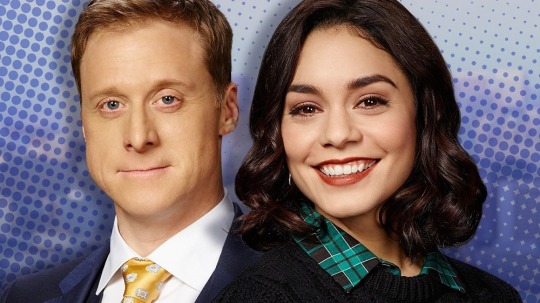
Latest story from https://movietvtechgeeks.com/laughs-powerless-102-wayne-dream-team/
More Laughs from 'Powerless' 102 Wayne Dream Team
Powerless might have potential after all. In our first review, I said the show was good. It got a few chuckles out of this viewer, and if it gives me more than that, we have a really good show. Guess what? The second episode did. Vanessa Hudgens as Emily and Alan Tudyk as Van Wayne were amazing and the rest of the cast actually seemed to get better. I got a few laughs out of this one and for me, that makes a good sitcom. Another TV show genre I like is the sitcom but not every one because there are hundreds out there. I’d like to share some that I really liked. There’s ALF, Perfect Strangers, Just Shoot Me, The Nanny, Friends, 3rd Rock from the Sun and The Big Bang Theory. Powerless still needs to work its way up and if the second episode is an indication, it just might. For those not familiar with the show, it’s set in a world where superheroes and supervillains are running around, and in this case, the heroes are from DC Comics. So there’s the occasional mention of Superman, Batman, The Flash and maybe more. Plus, the show’s main setting is a subsidiary of Wayne Enterprises called Wayne Security located in a fictional city (which is common with DC Comics) called Charm City where the cast develop gadgets to protect citizens from hero-villain conflicts or villain attacks. Their local hero is a woman named Crimson Fox, and the local villain is something like Marvel’s Green Goblin called Jack-O-Lantern. The show’s leads are Vanessa Hudgens as R&D Director Emily Locke and Alan Tudyk as Van Wayne, cousin to Bruce Wayne and head of Wayne Security. SPOILER Alert! Avoid the next three italicized paragraphs to truly enjoy the show. So to recap the episode, it begins with Emily and Christina Kirk’s character Jackie are on their way to work when Jack-O-Lantern terrorizes their current location resulting in debris falling on a cake stand where Emily was supposed to order sweets. Quite campy and mundane but it’s meant to be so. That serves as the premise for their next gadget which Emily eagerly promised to deliver too early earning the ire of her staff. At the time, Emily told Jackie that she can motivate them by being friends with them which is very rare within a corporate environment. As they say, it’s lonely at the top. Van’s dilemma, on the other hand, is that his photo on the company’s dream team founded in their Iceland meeting was missing when it was posted on their wall, leaving only his shoulder. Jackie said nothing could be done about it and the head of HR mocked Van into action. With the deadline closing in, Emily’s staff was instead busy on a fantasy football-like superhero game instead of working on the project. In order to be friends, she earlier asked to join but the staff shut her out. Emily asks the head of HR to block the site from the company internet but the HR instead blocks everything but LinkedIn. Meanwhile, Van photoshopped a gun-slinging pose of himself on the Dream Team photo which led to the staff to make fun of him by memeing (did I spell that right?) him with other photoshopped pictures. HR threatened the staff with watching a 6-hour anti-bullying video which Emily opposed leading HR to out her as being responsible for the internet lockdown. Feeling bad, Emily made a deal with HR to watch the video four consecutive times (24 hours) in exchange for the internet and cancellation of the staff punishment. The staff appreciated the gesture and offered their friendship while Jackie had Van’s cropped Dream Team photo restored as a friendly gesture, plus the team’s anti-rubble umbrella project was a success. Like I said, from chuckles to laughs is a big improvement for a sitcom. The characters are gradually getting fleshed out like office colleagues after some time of being in their company, especially Jackie. She’s jaded, she’s cynic but well-meaning and capable. Van Wayne remained consistent of being an a$$, and his character is made funnier this time around. Vanessa as Emily has also done well and seemed to have put some great effort into her character which is much appreciated as her character turned out great. We get to meet some other people in the office like the guy from HR and the token cute insignificant like Susan. Episode 2 is quite fun, and hopefully, this continues.
Movie TV Tech Geeks News
0 notes